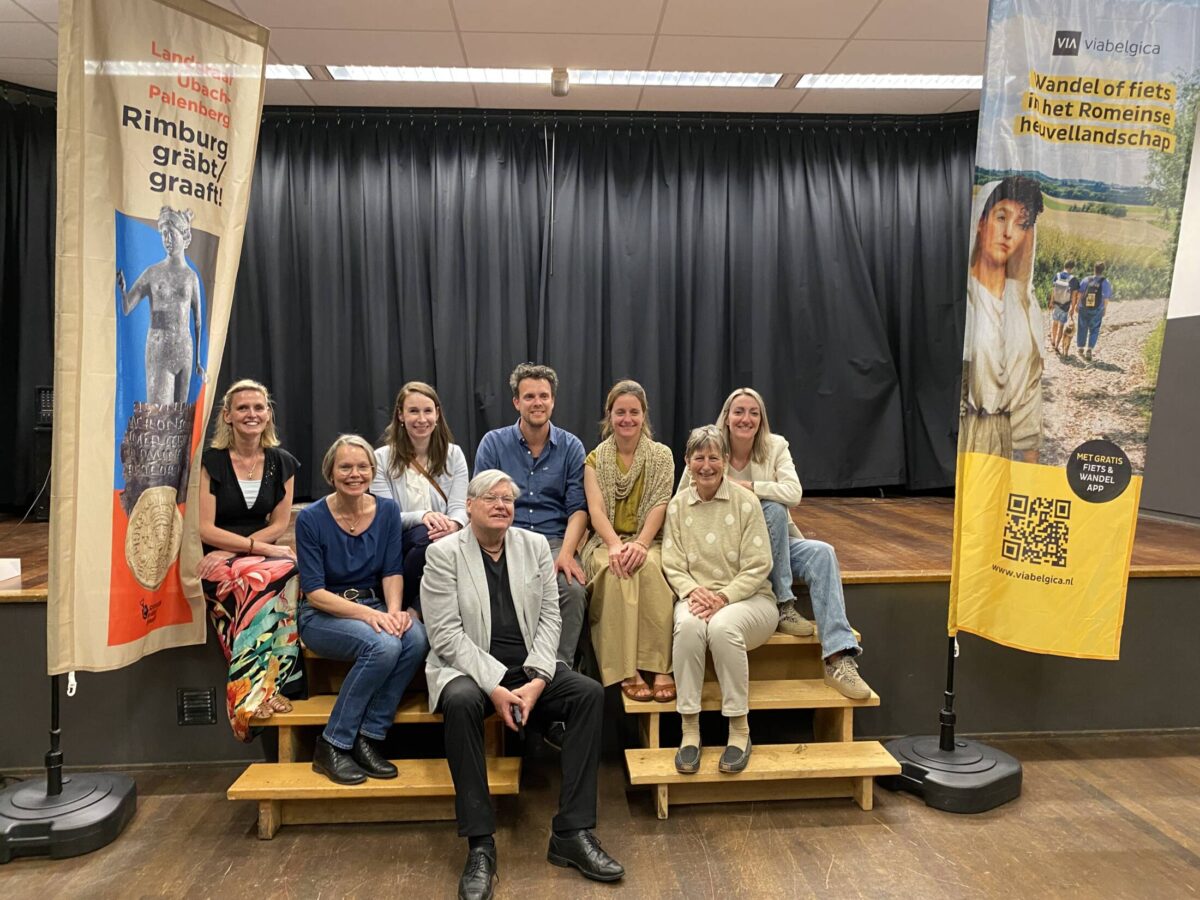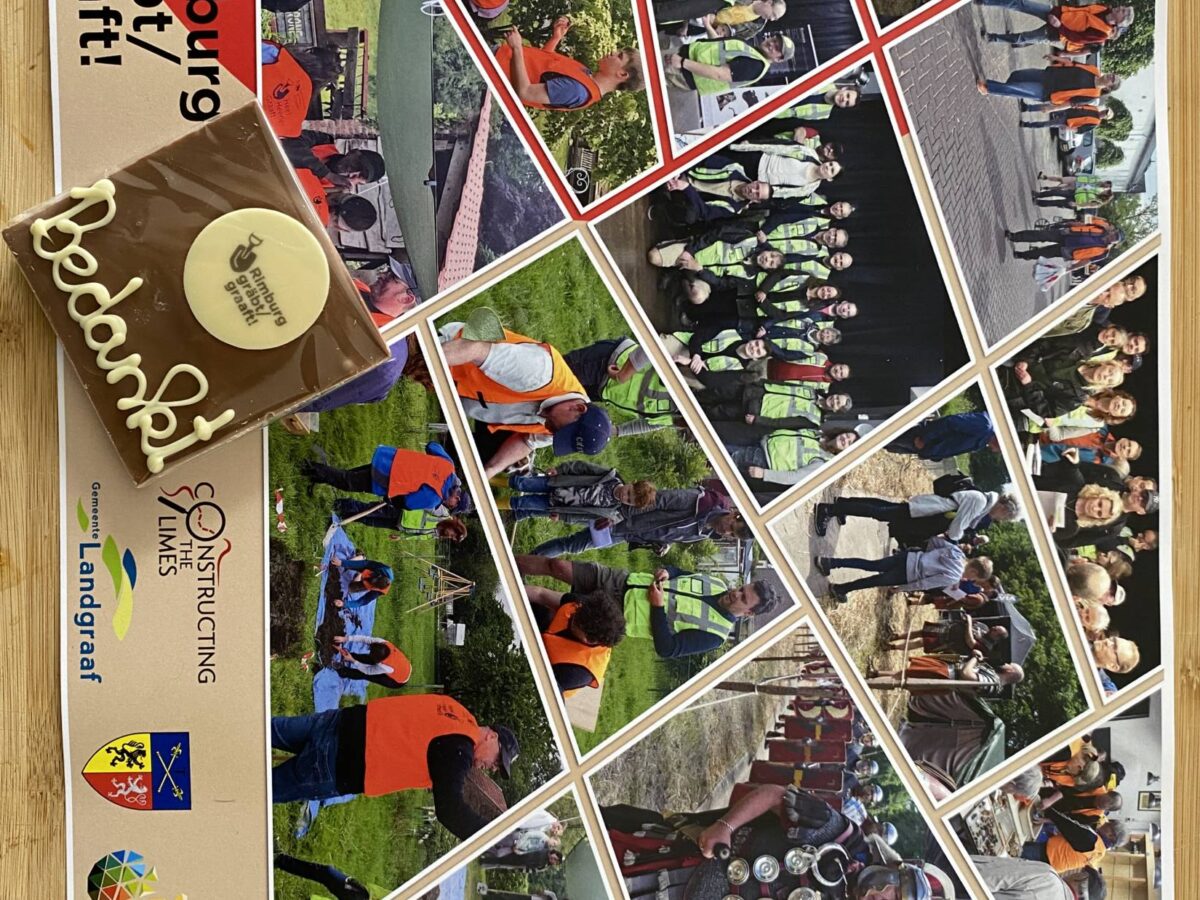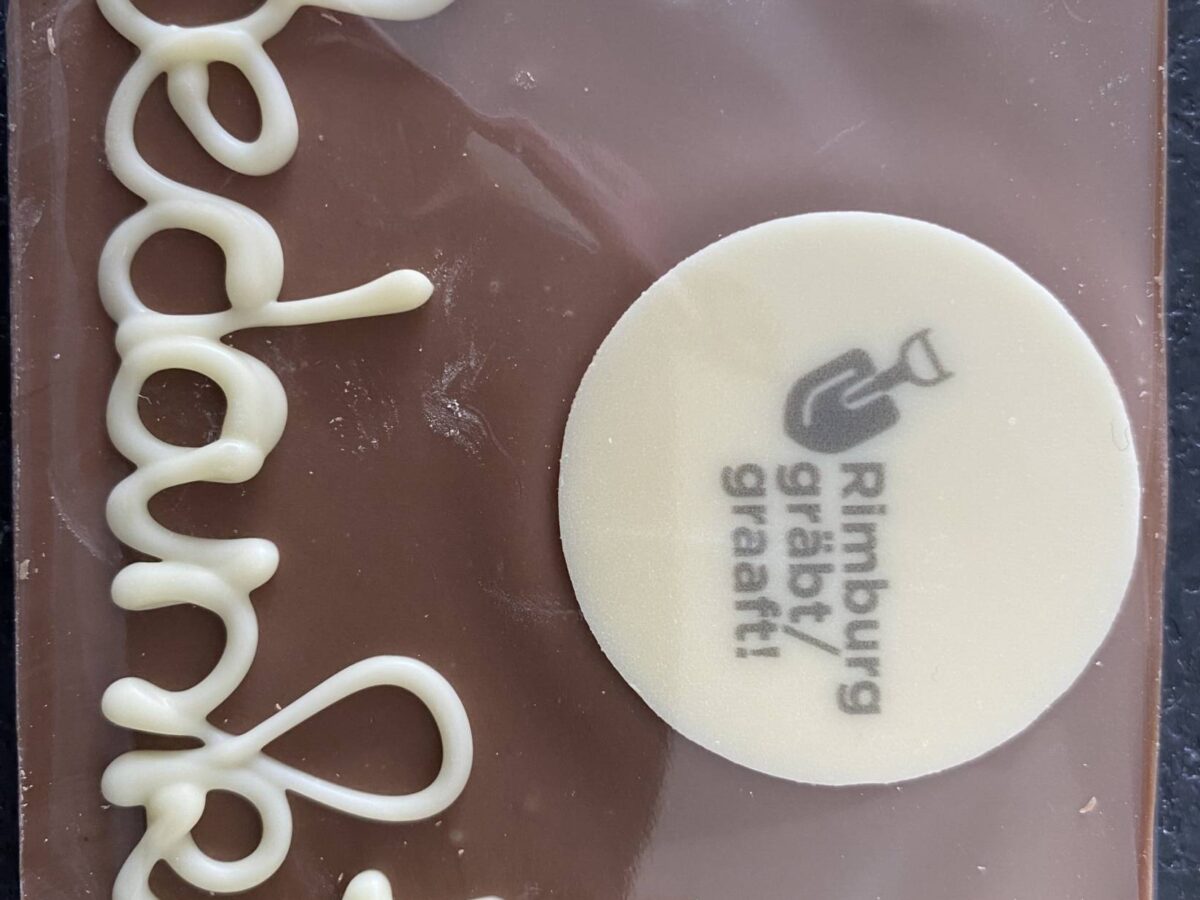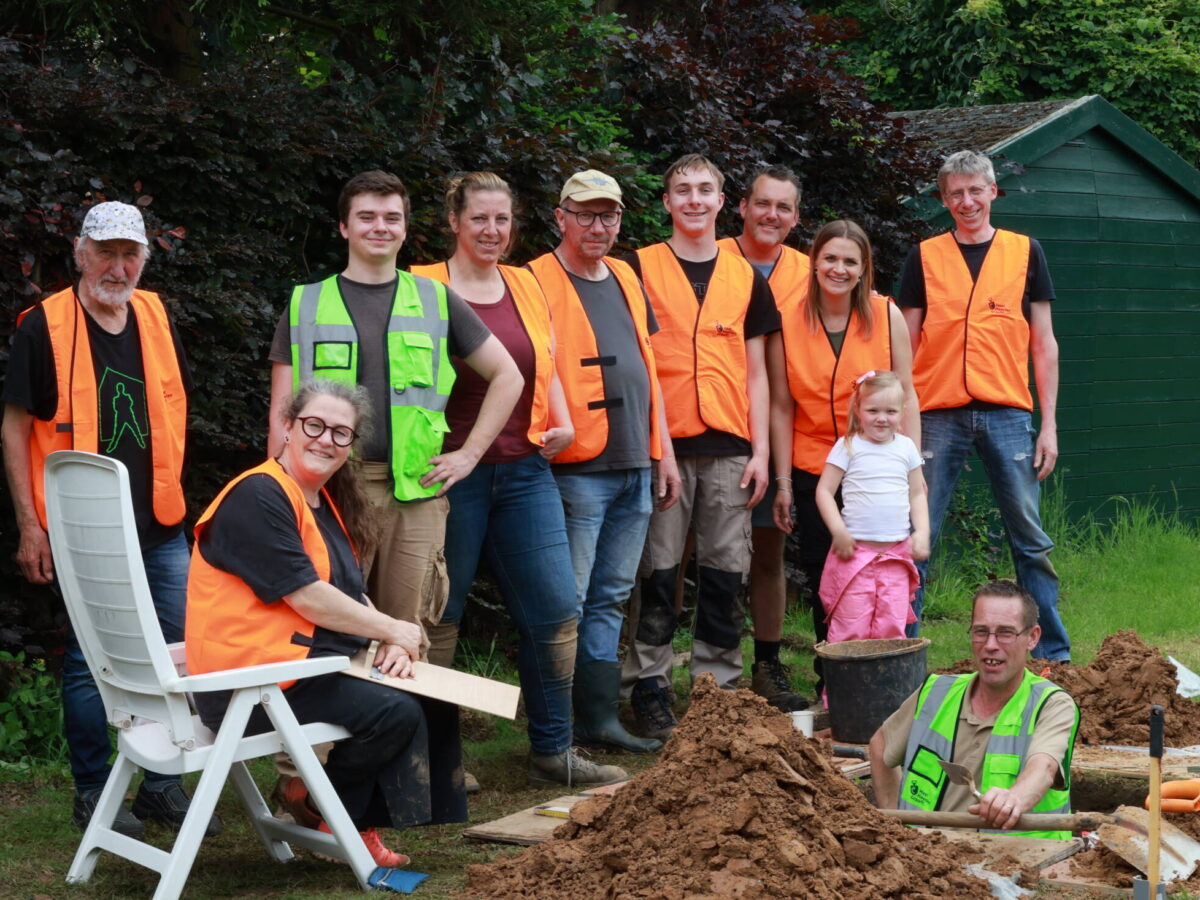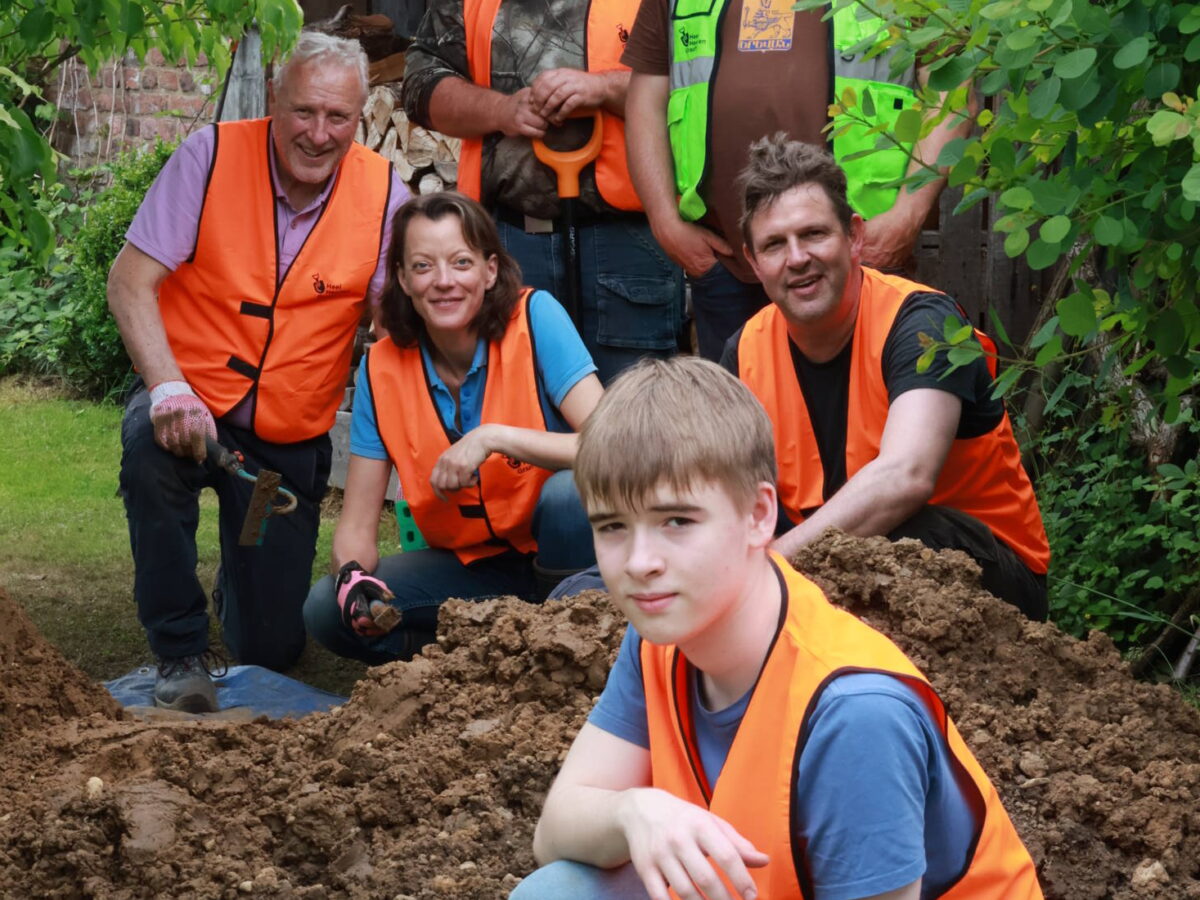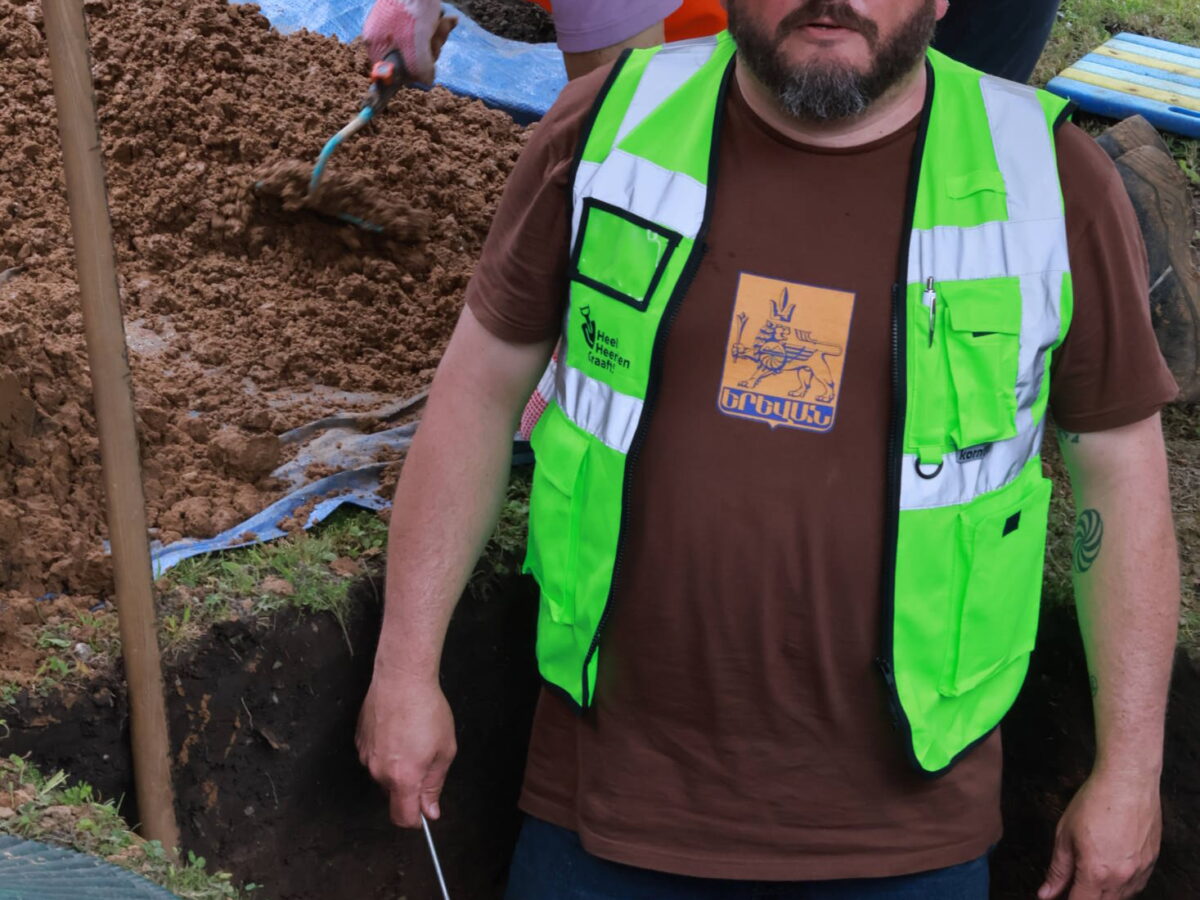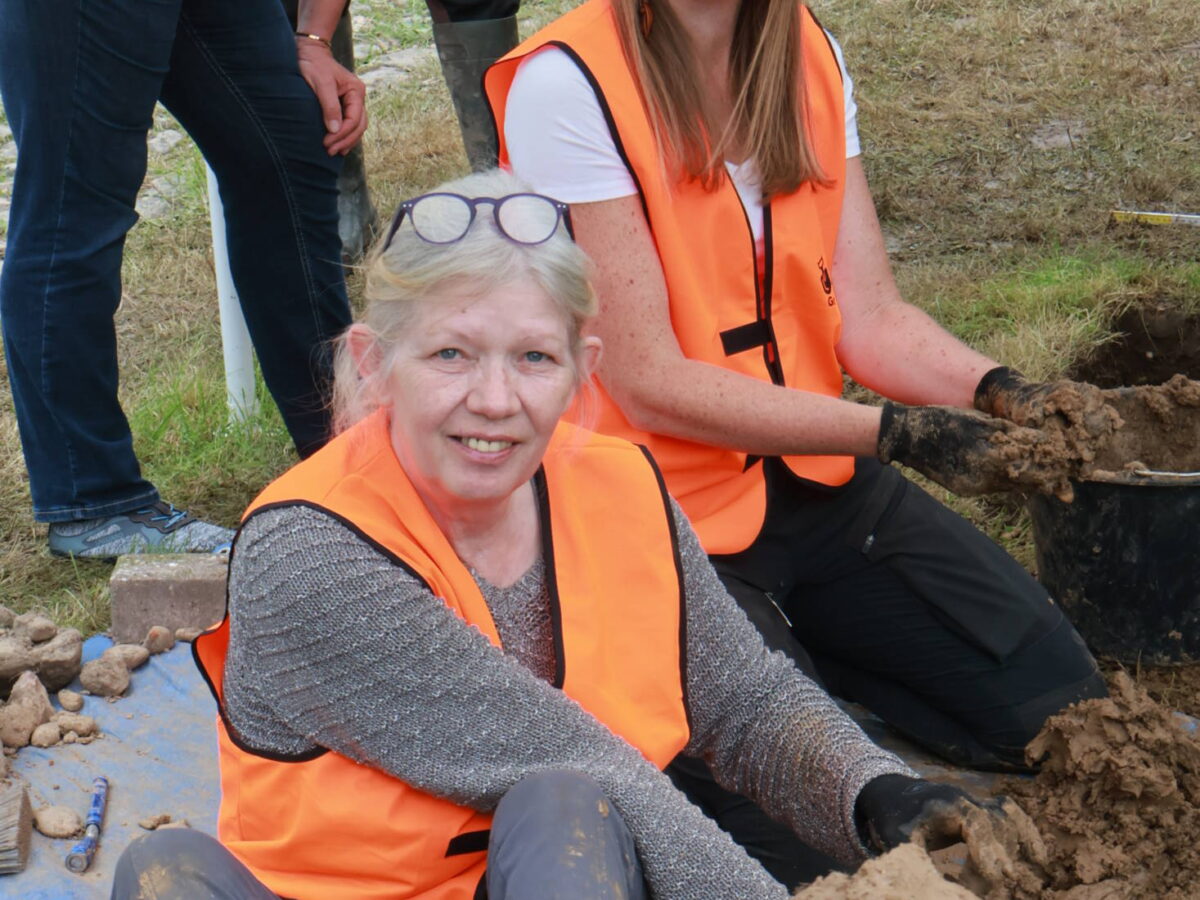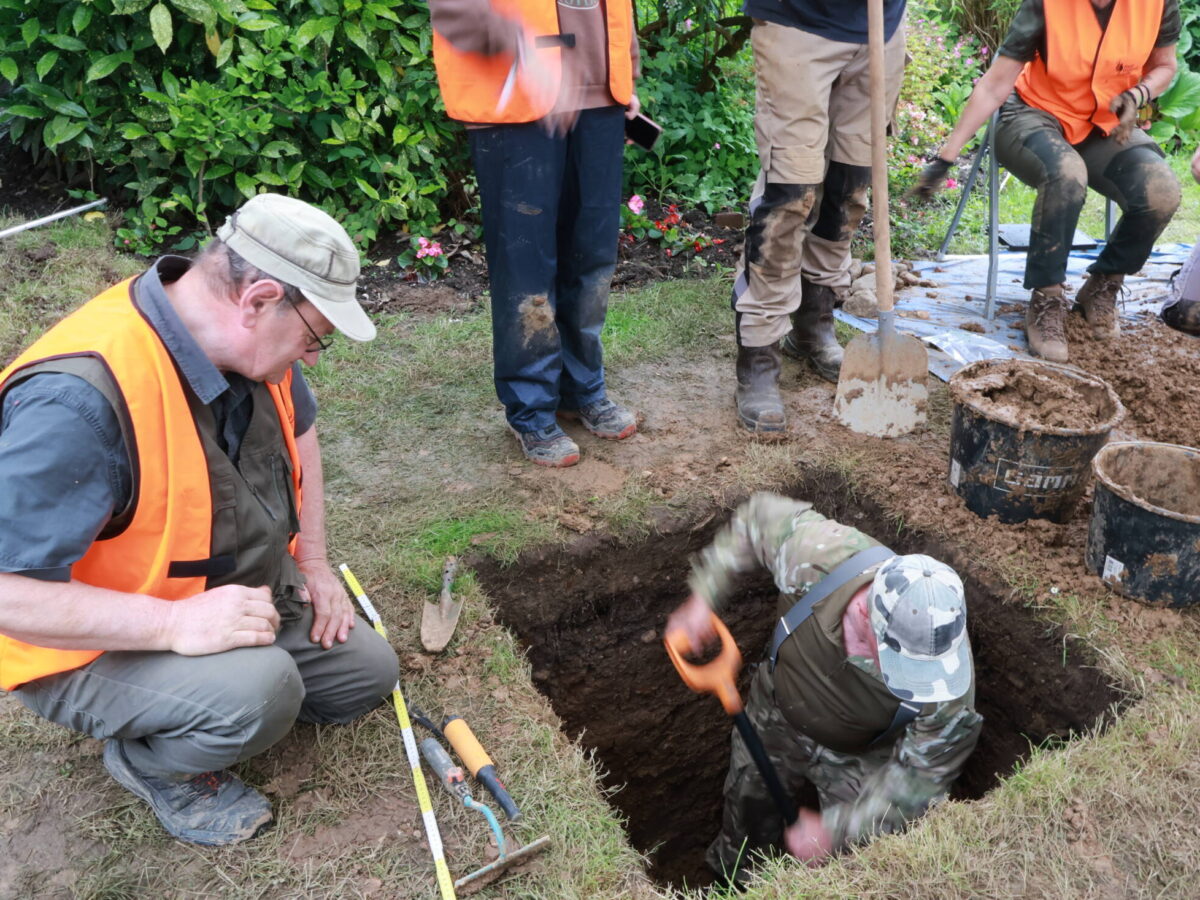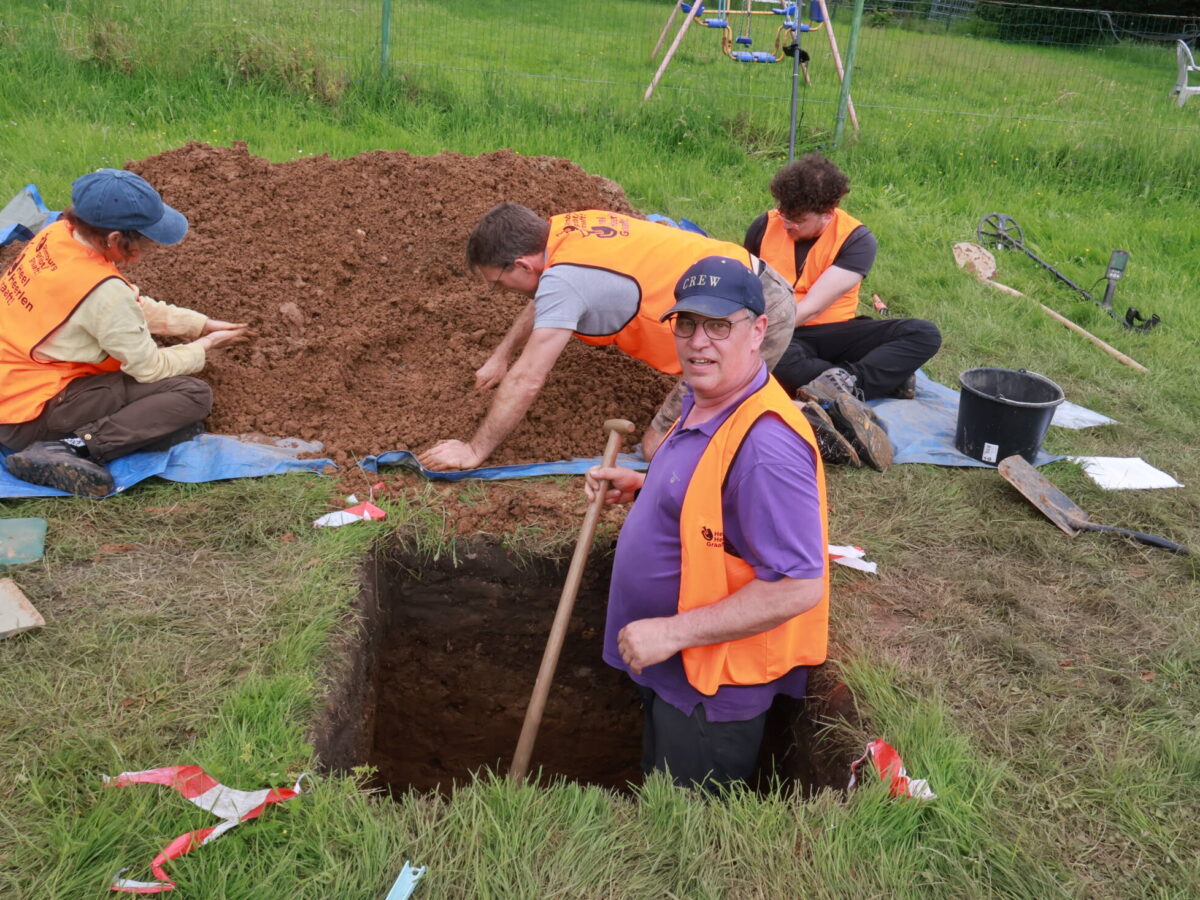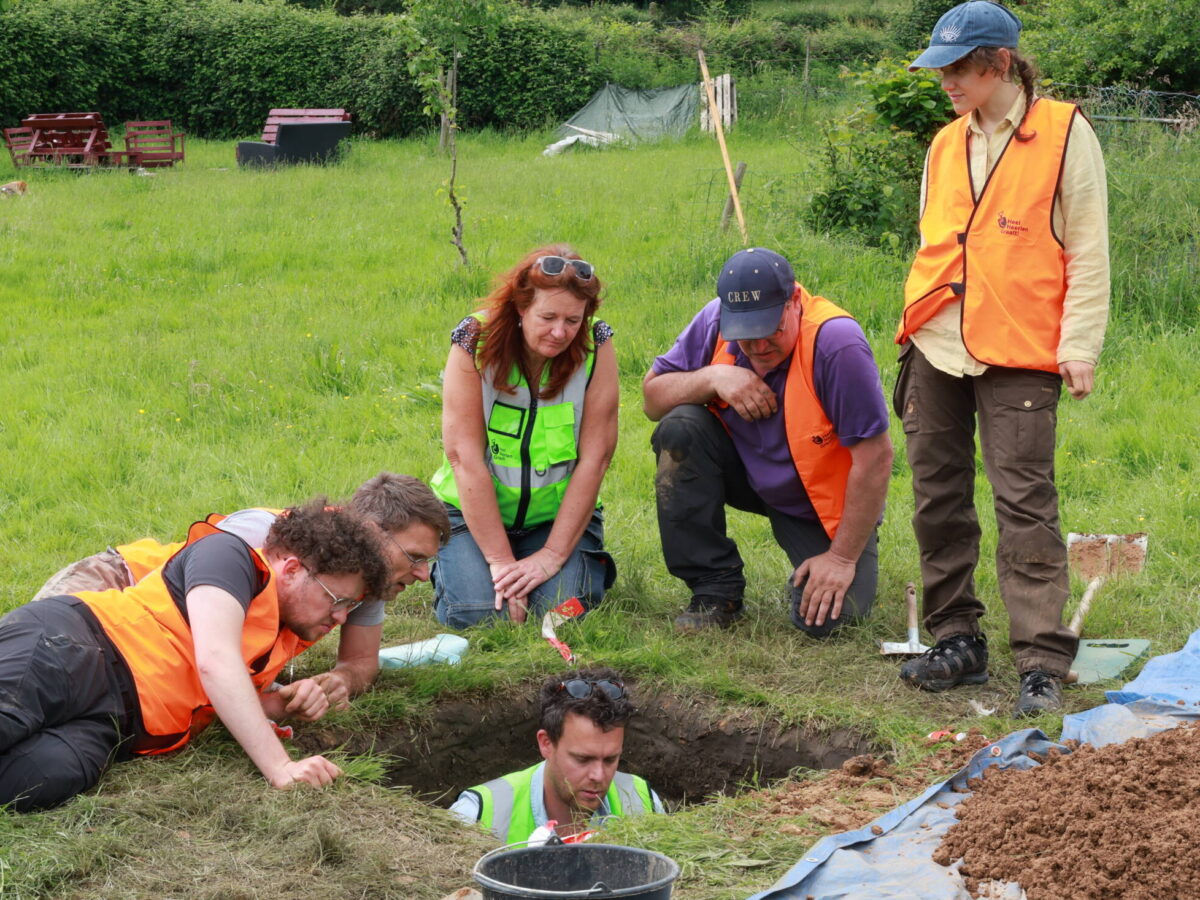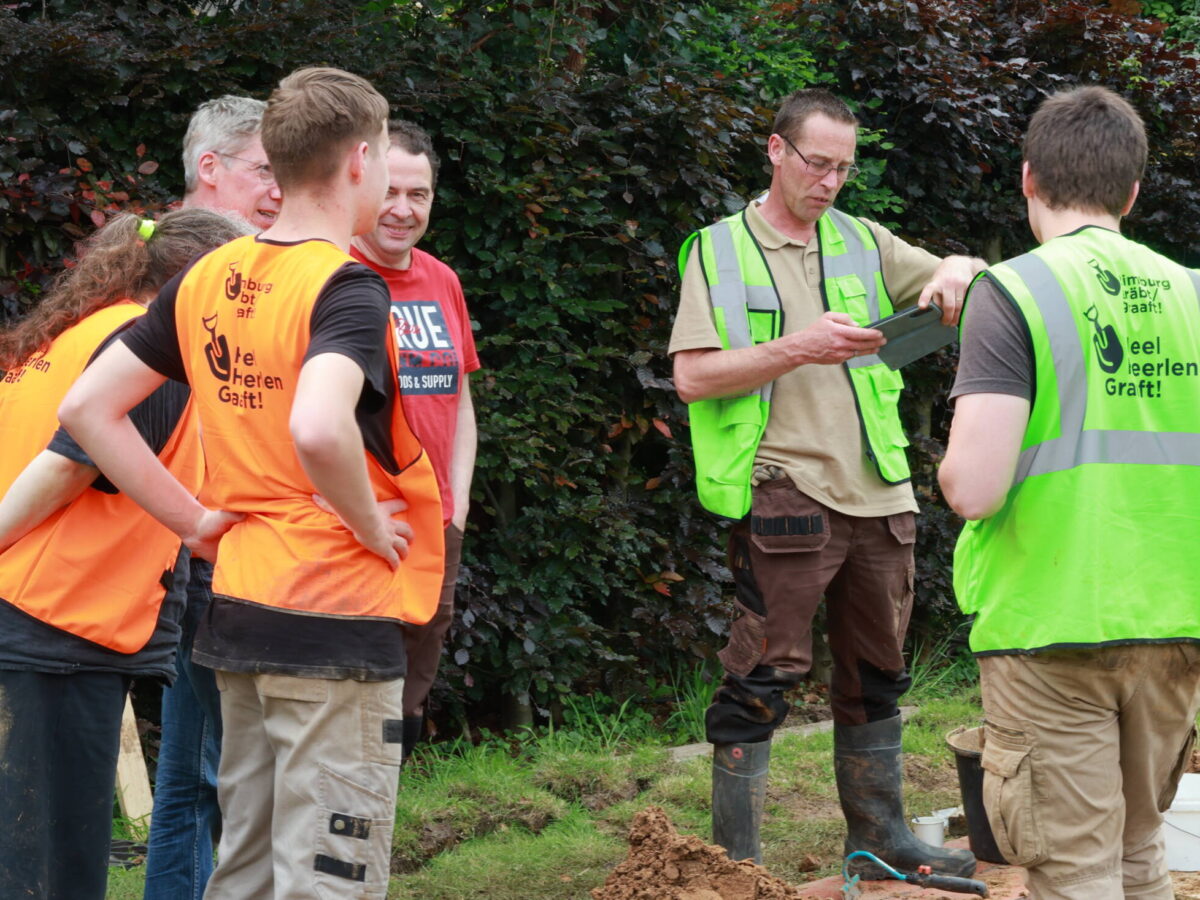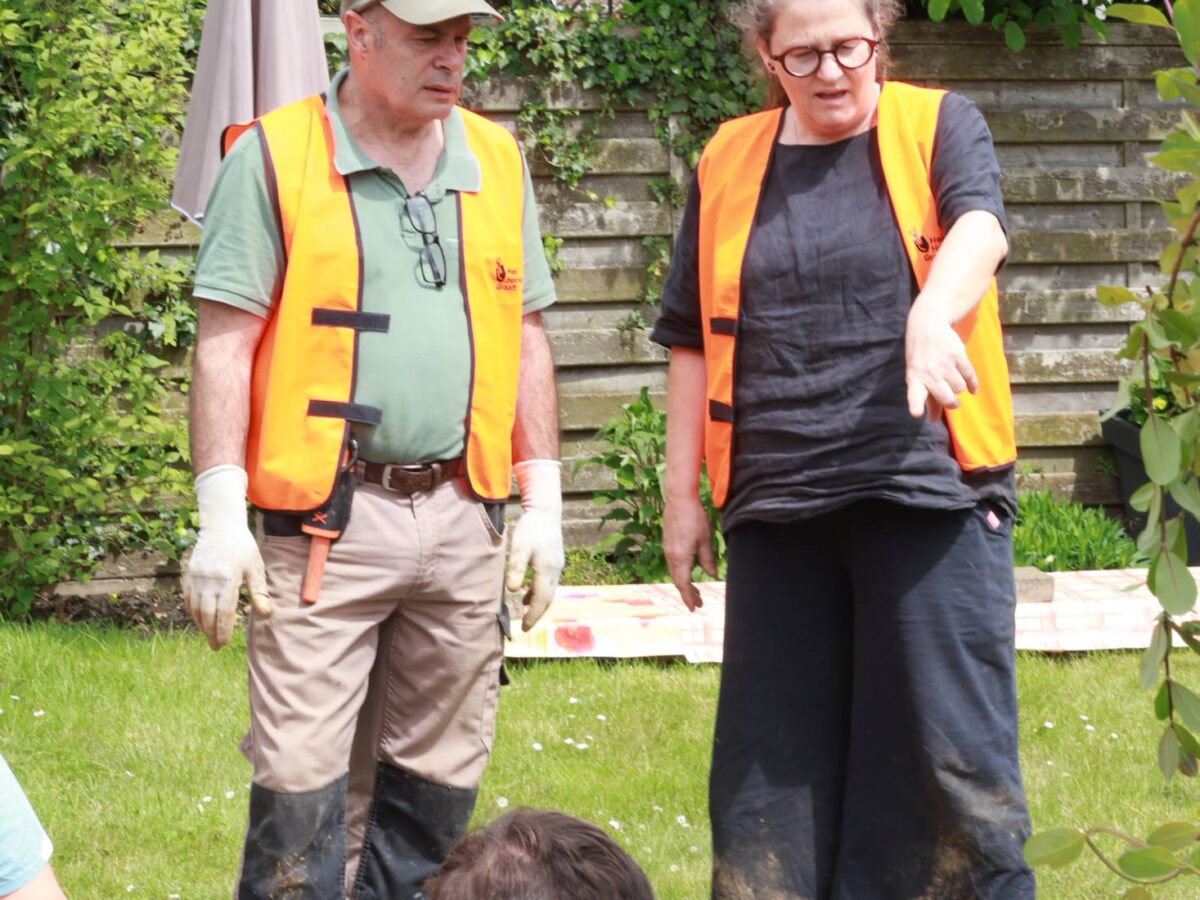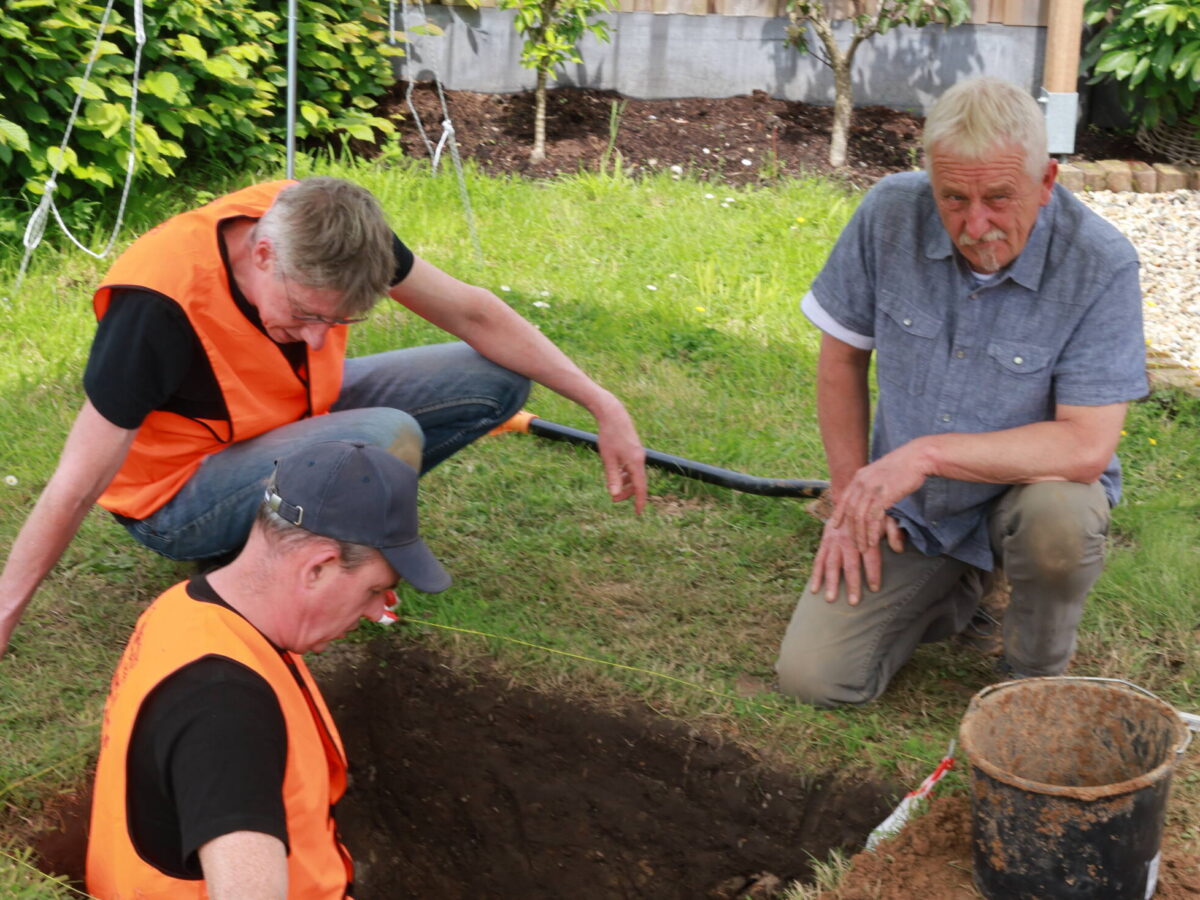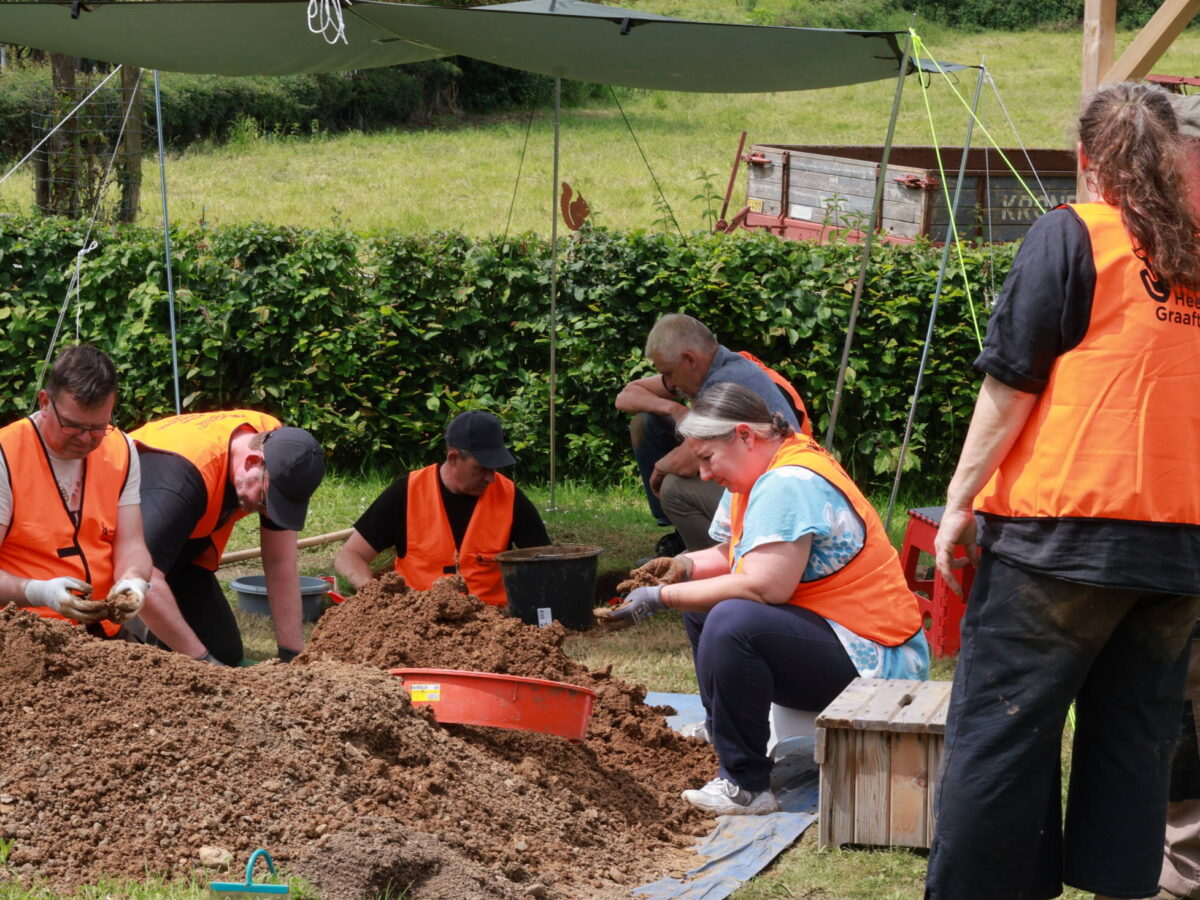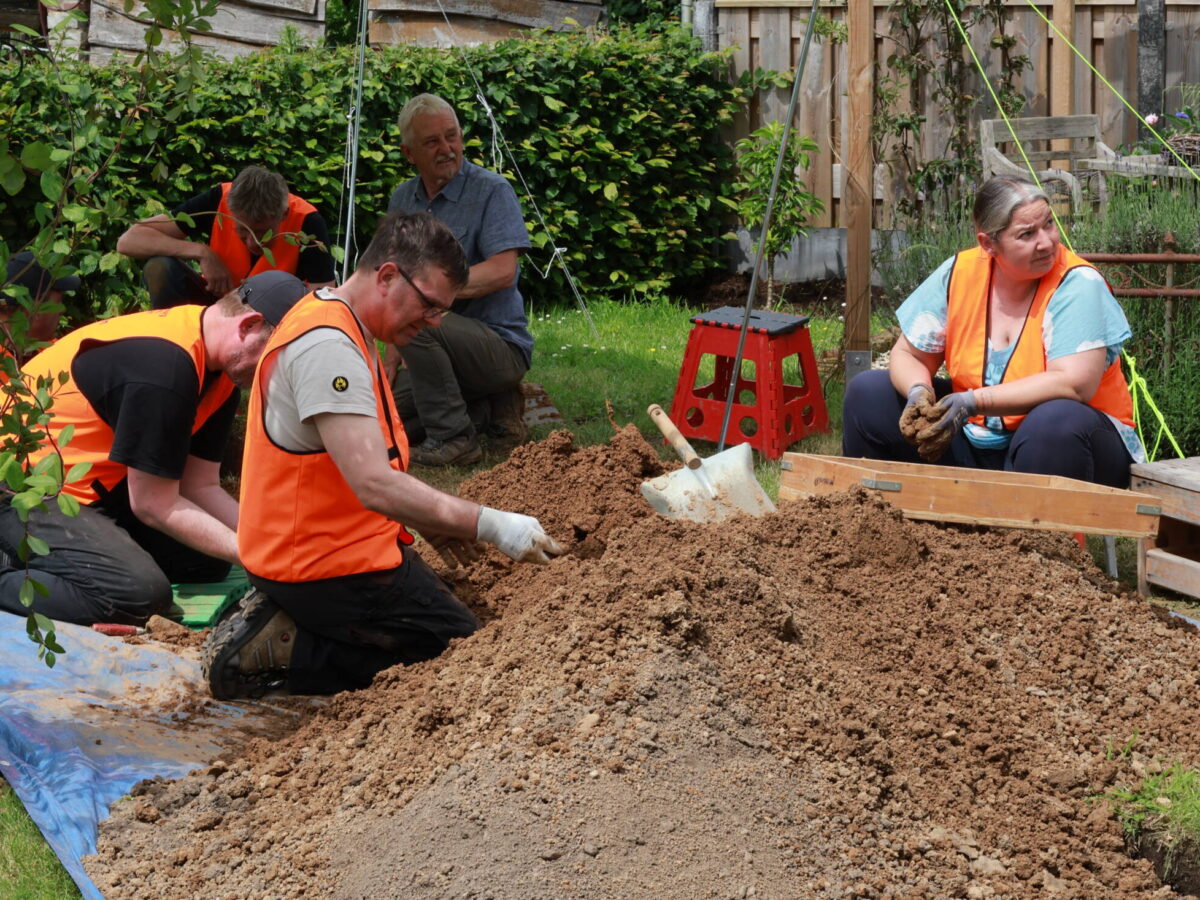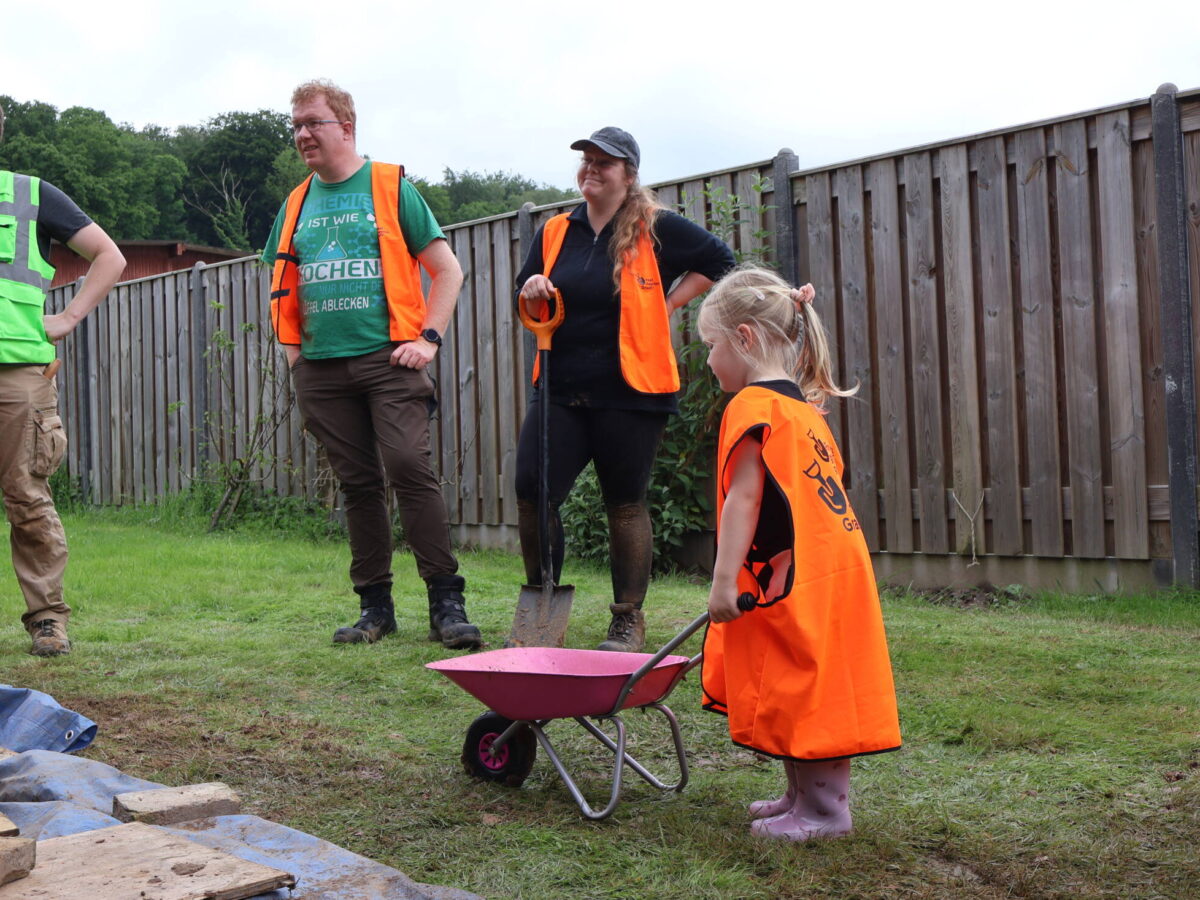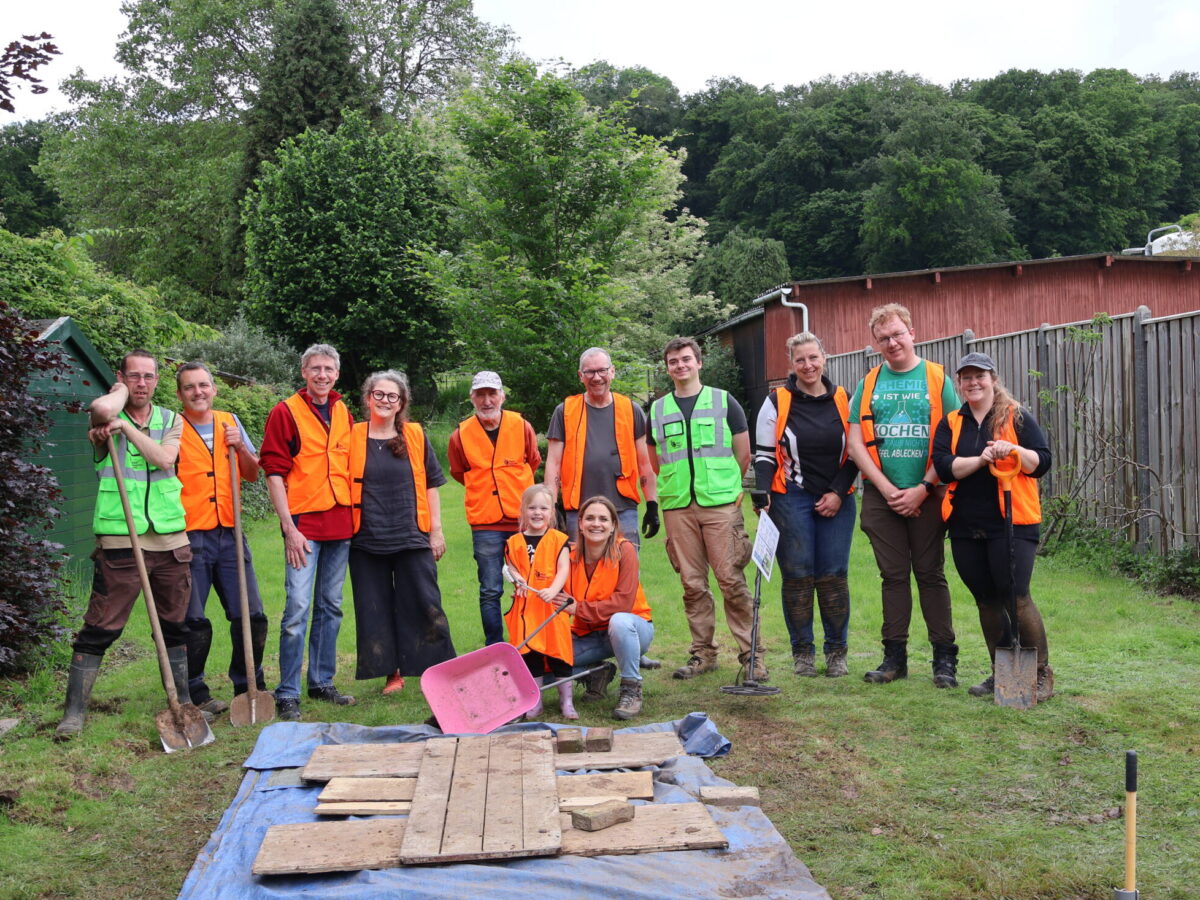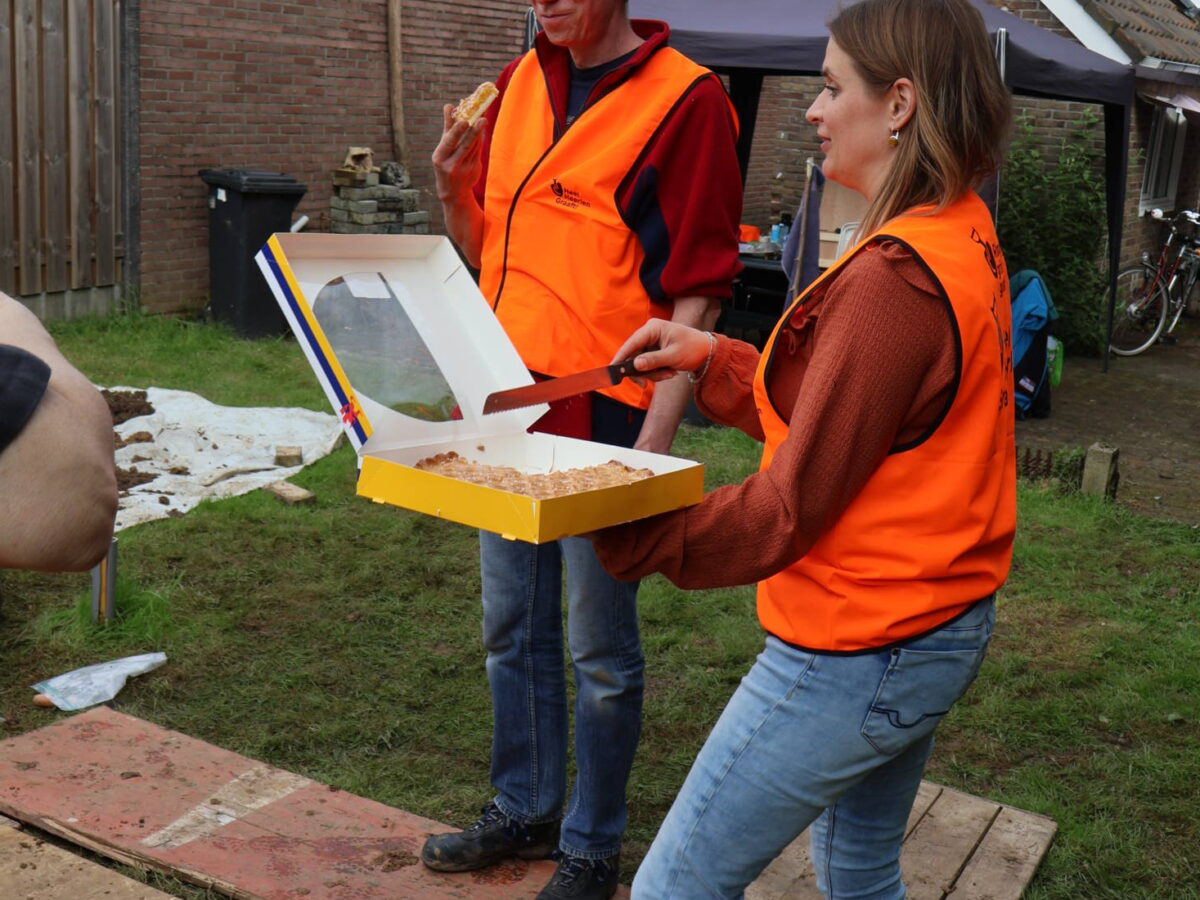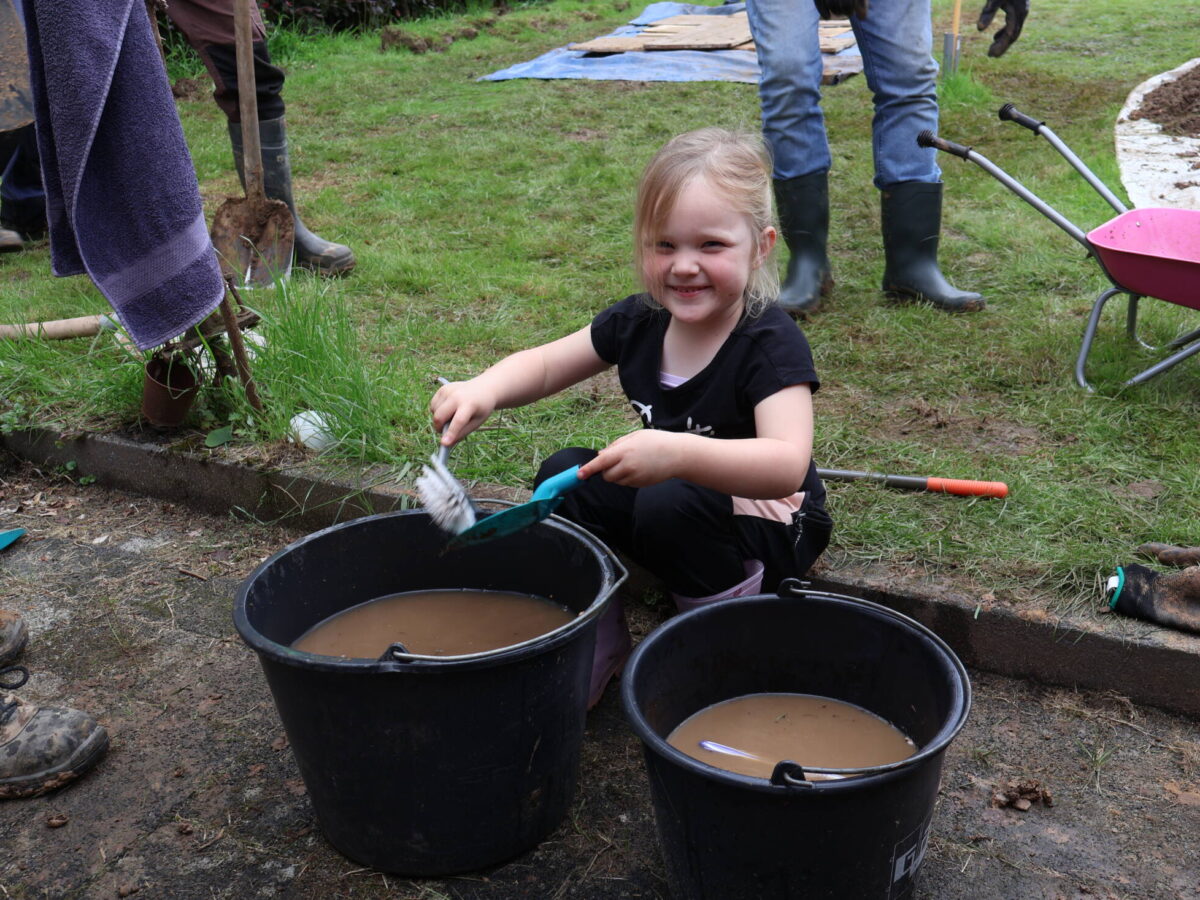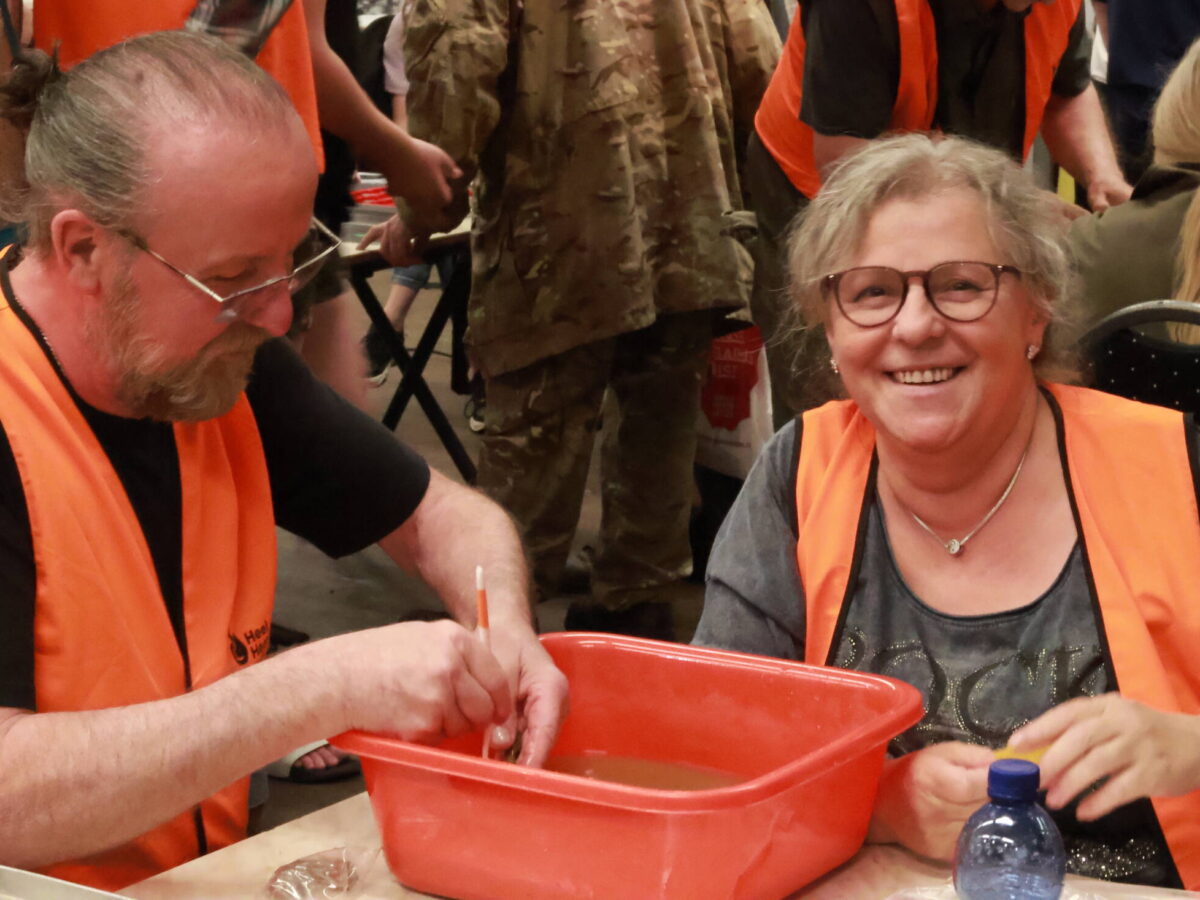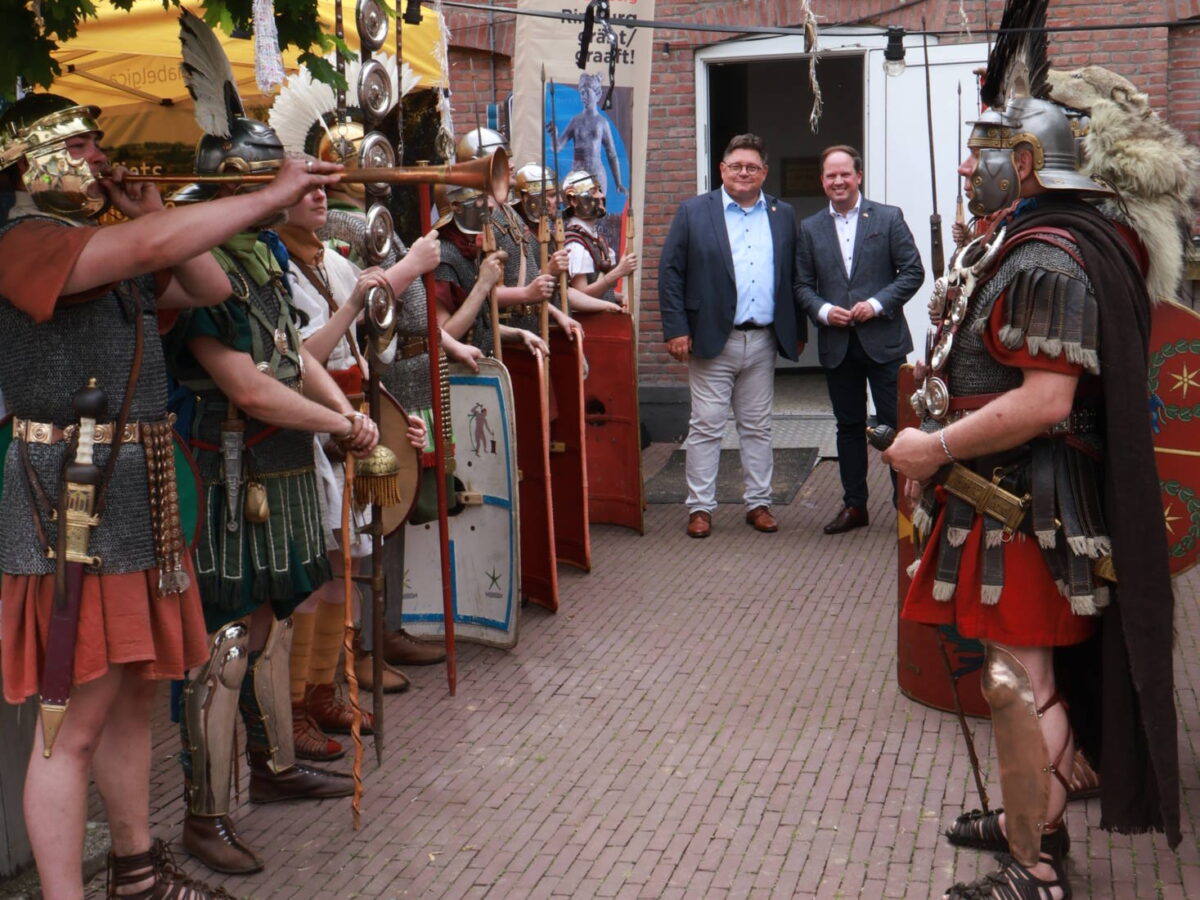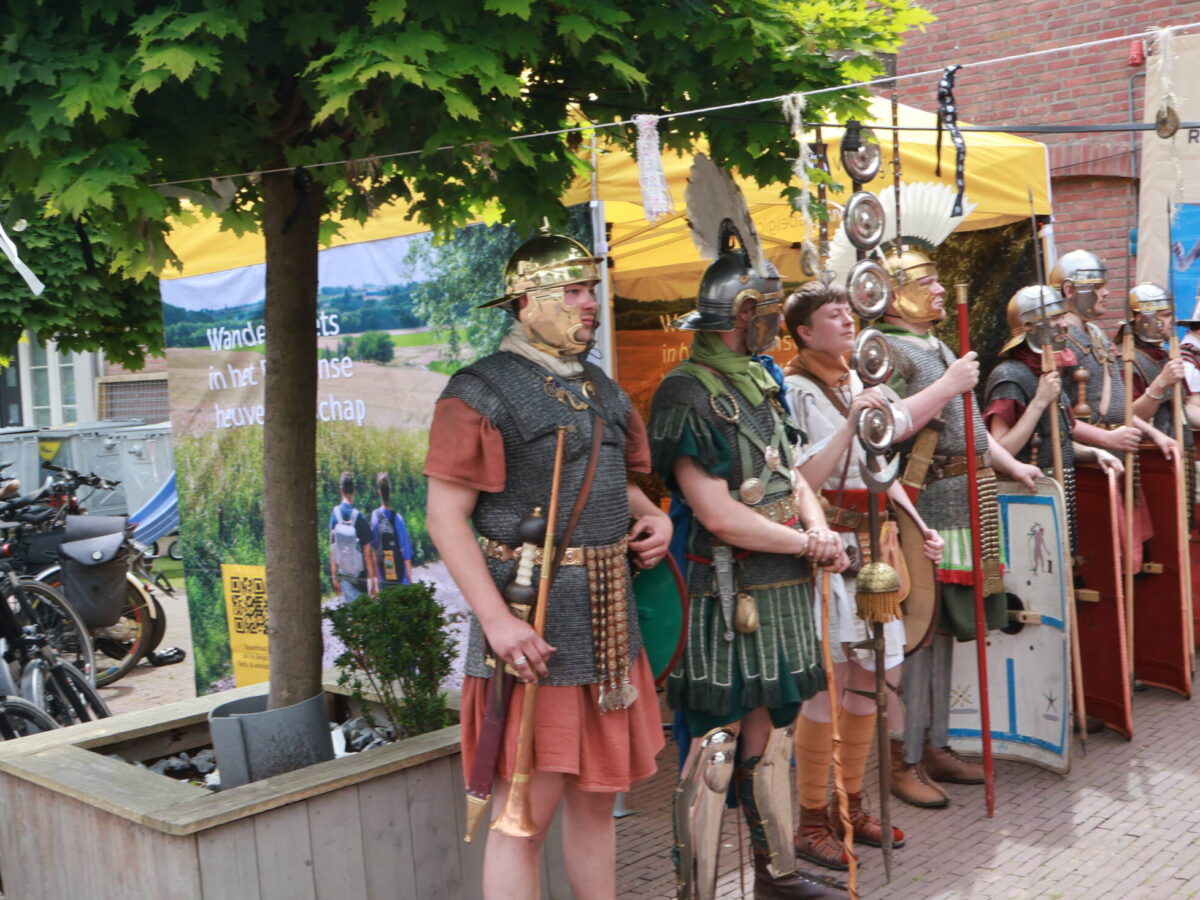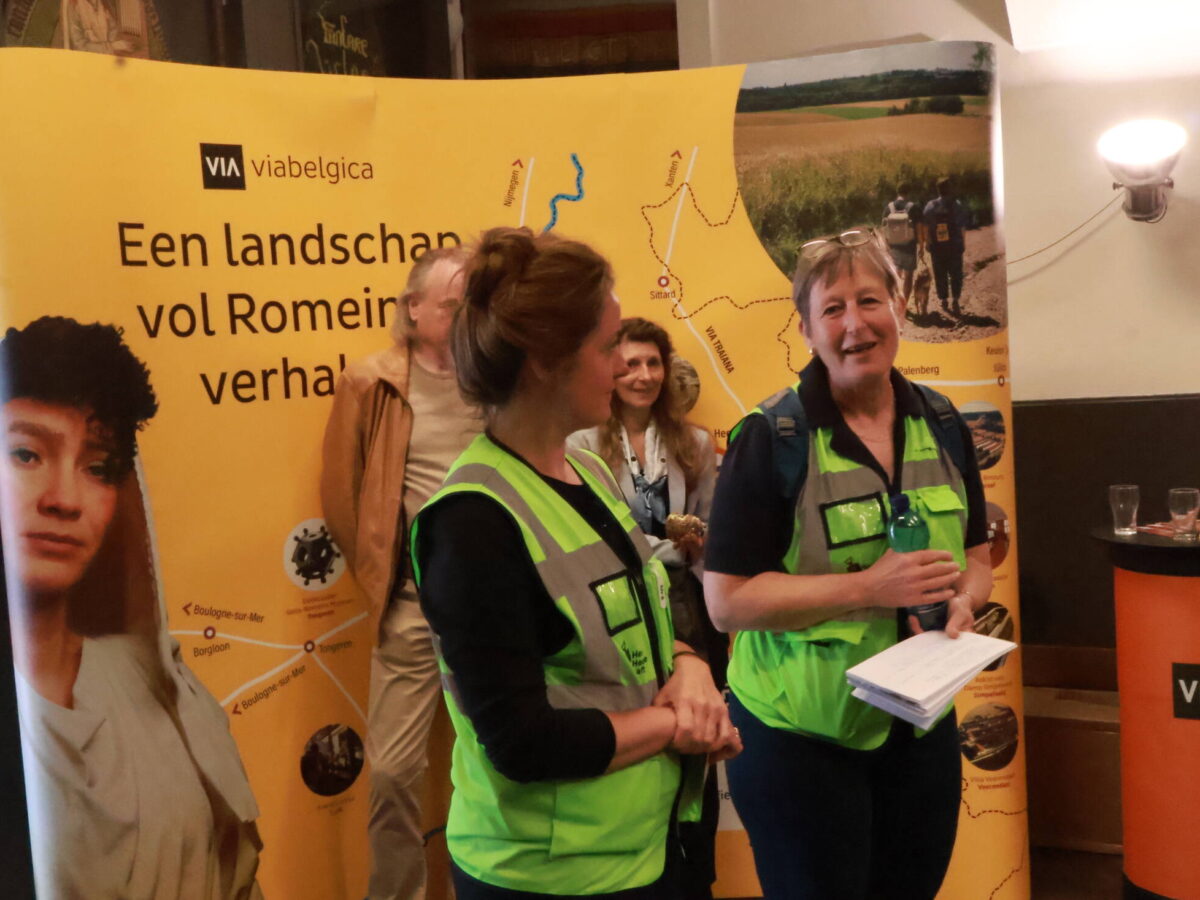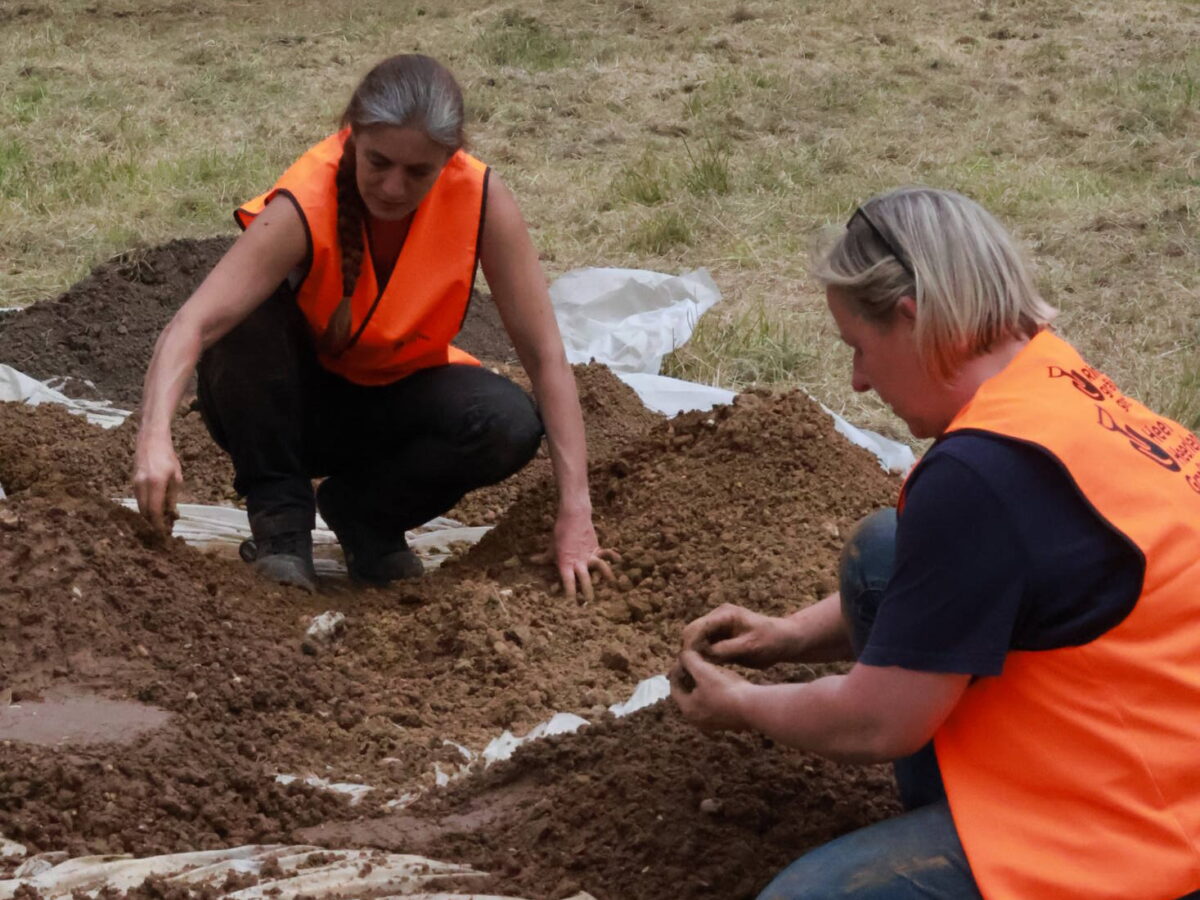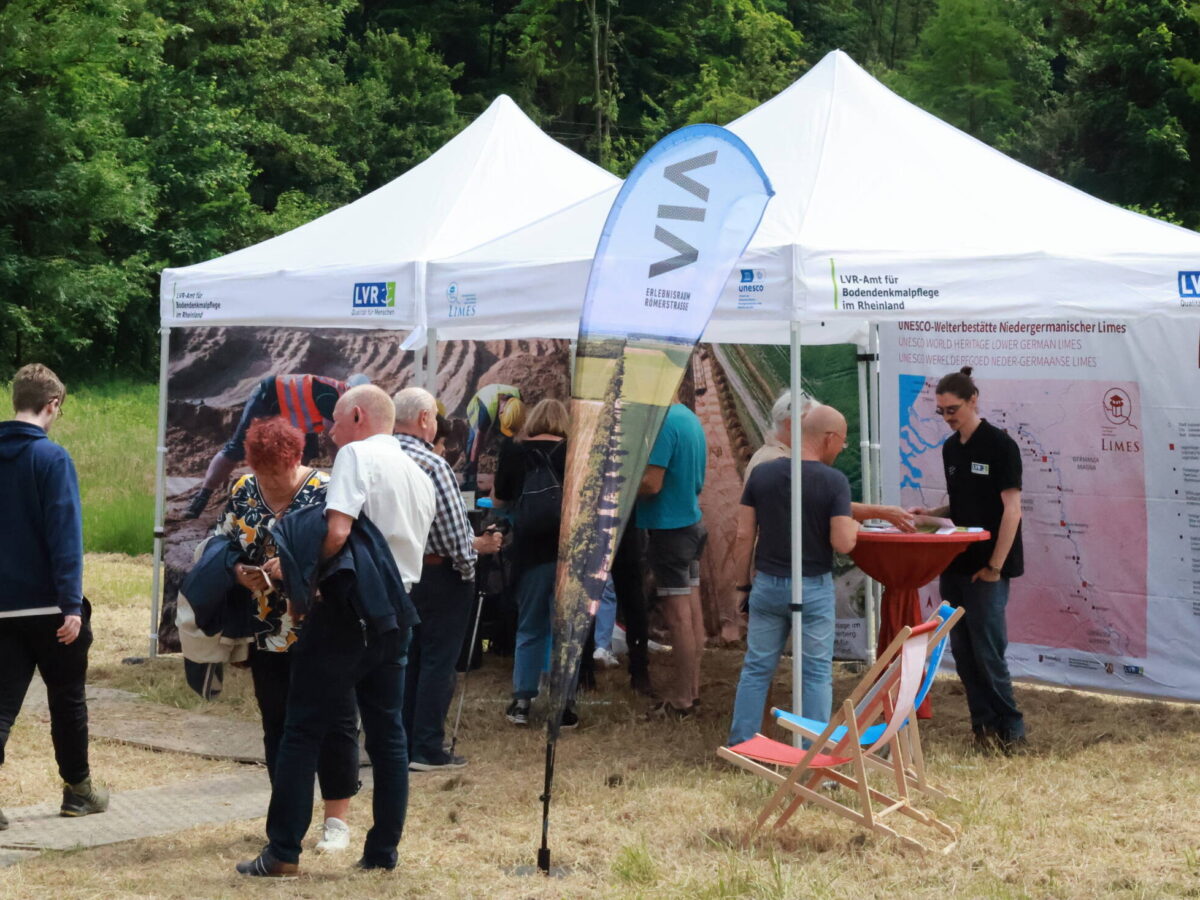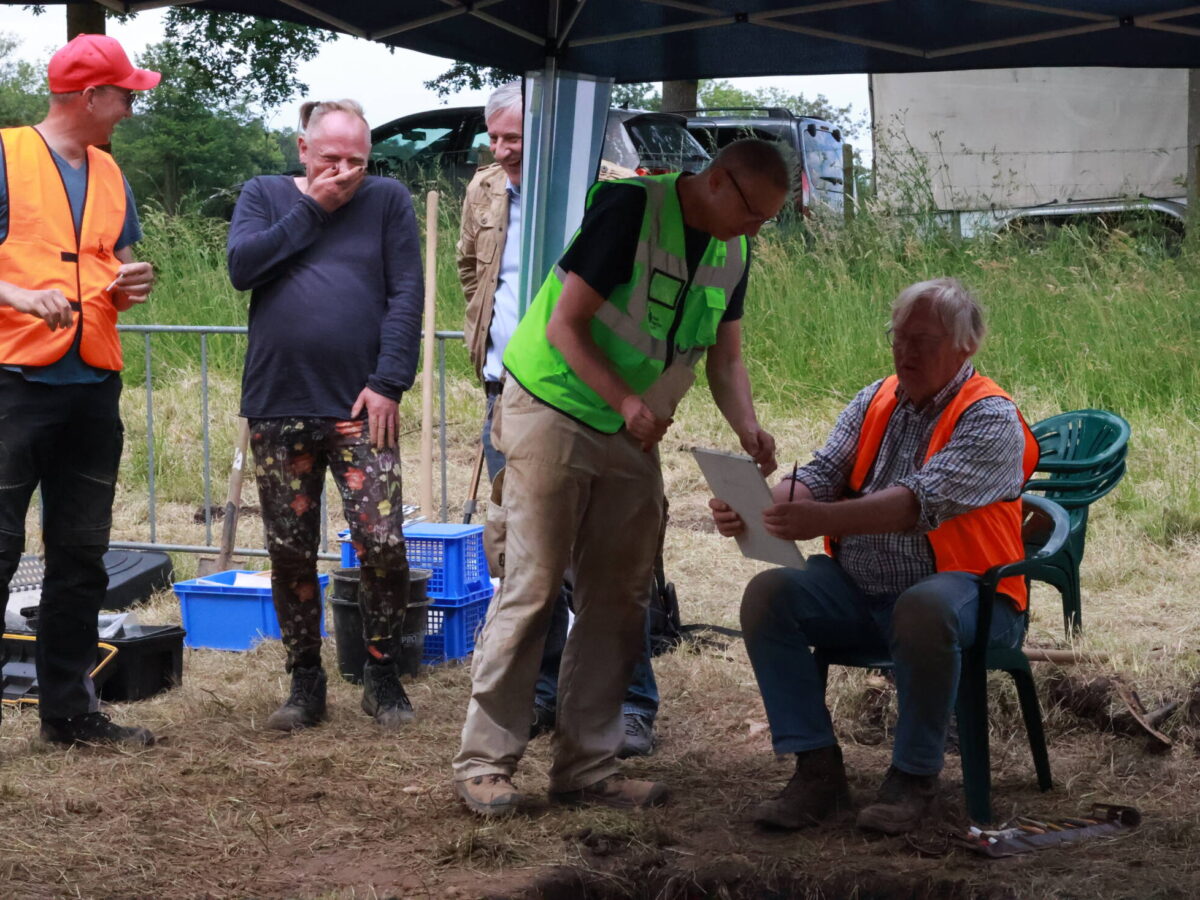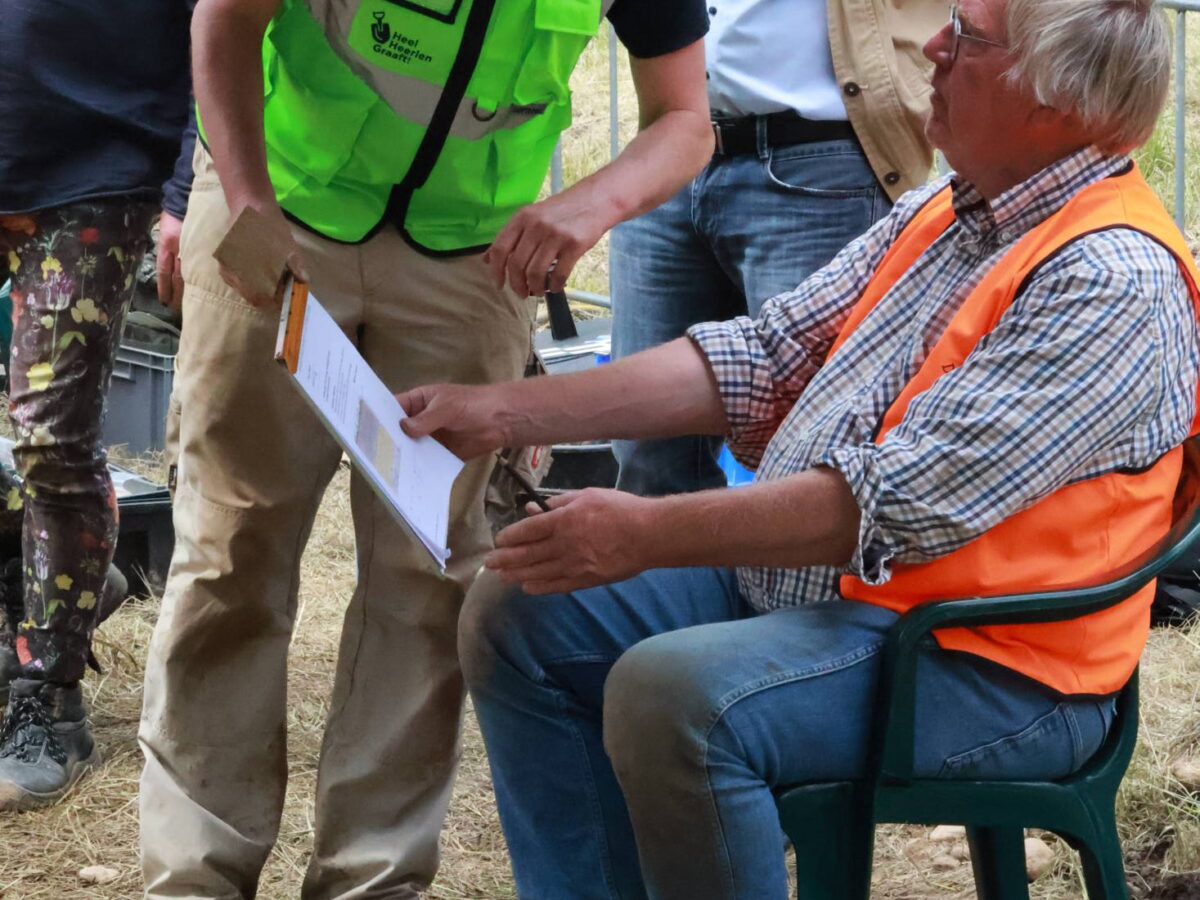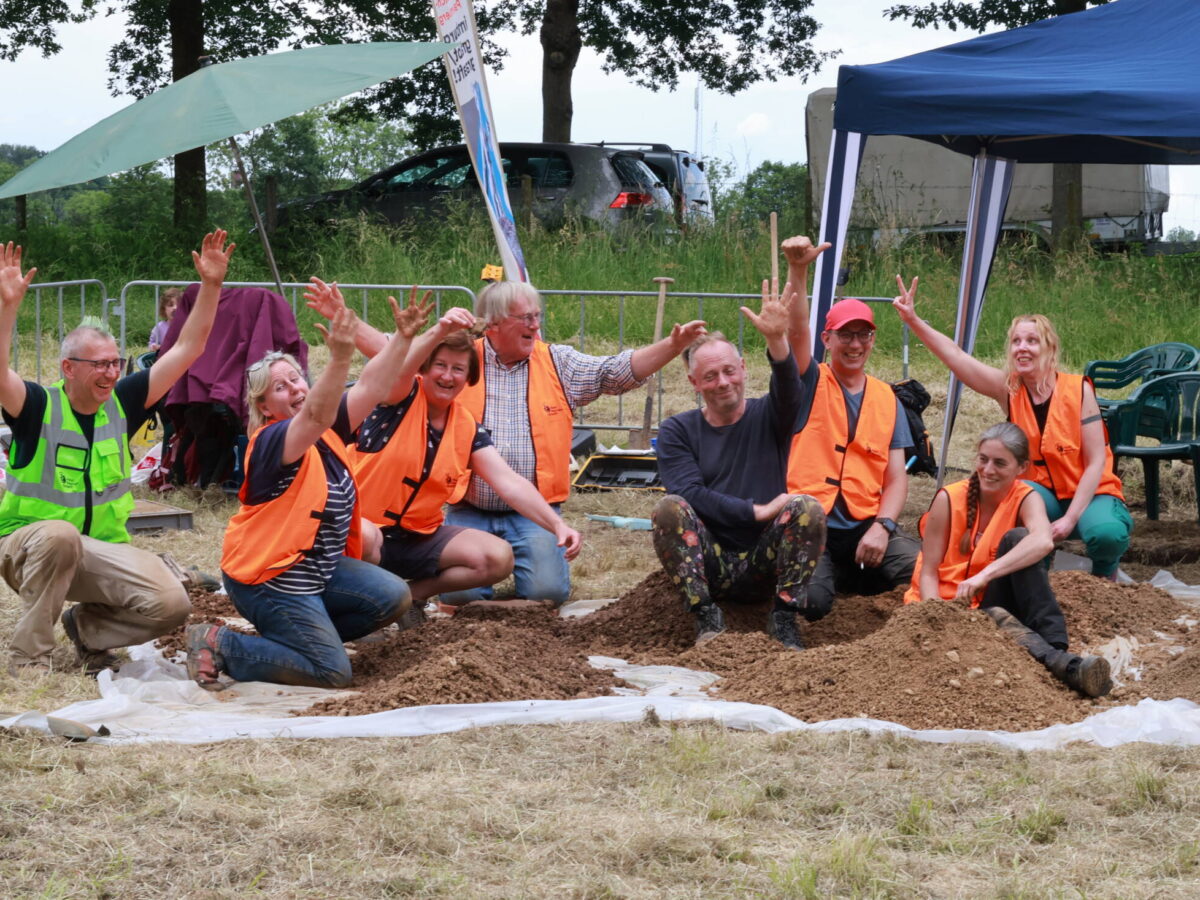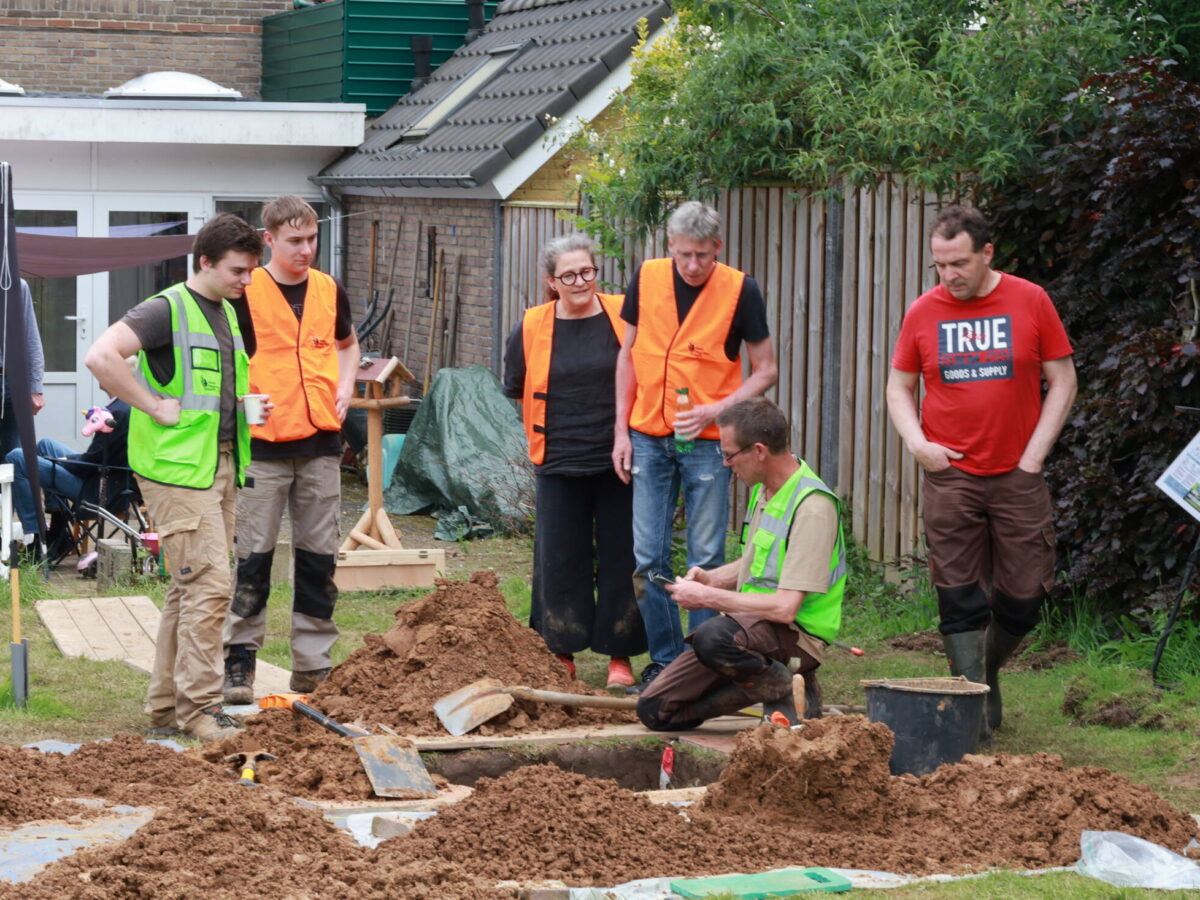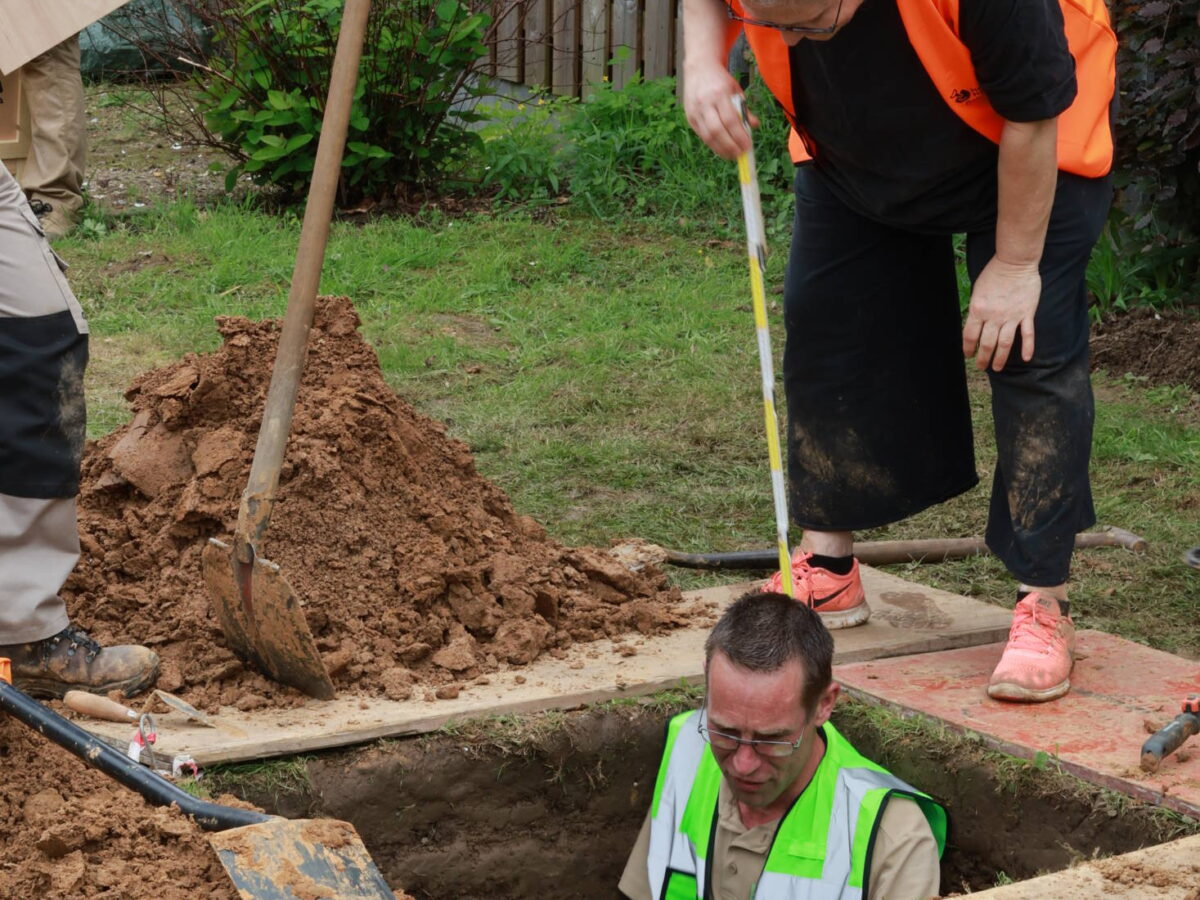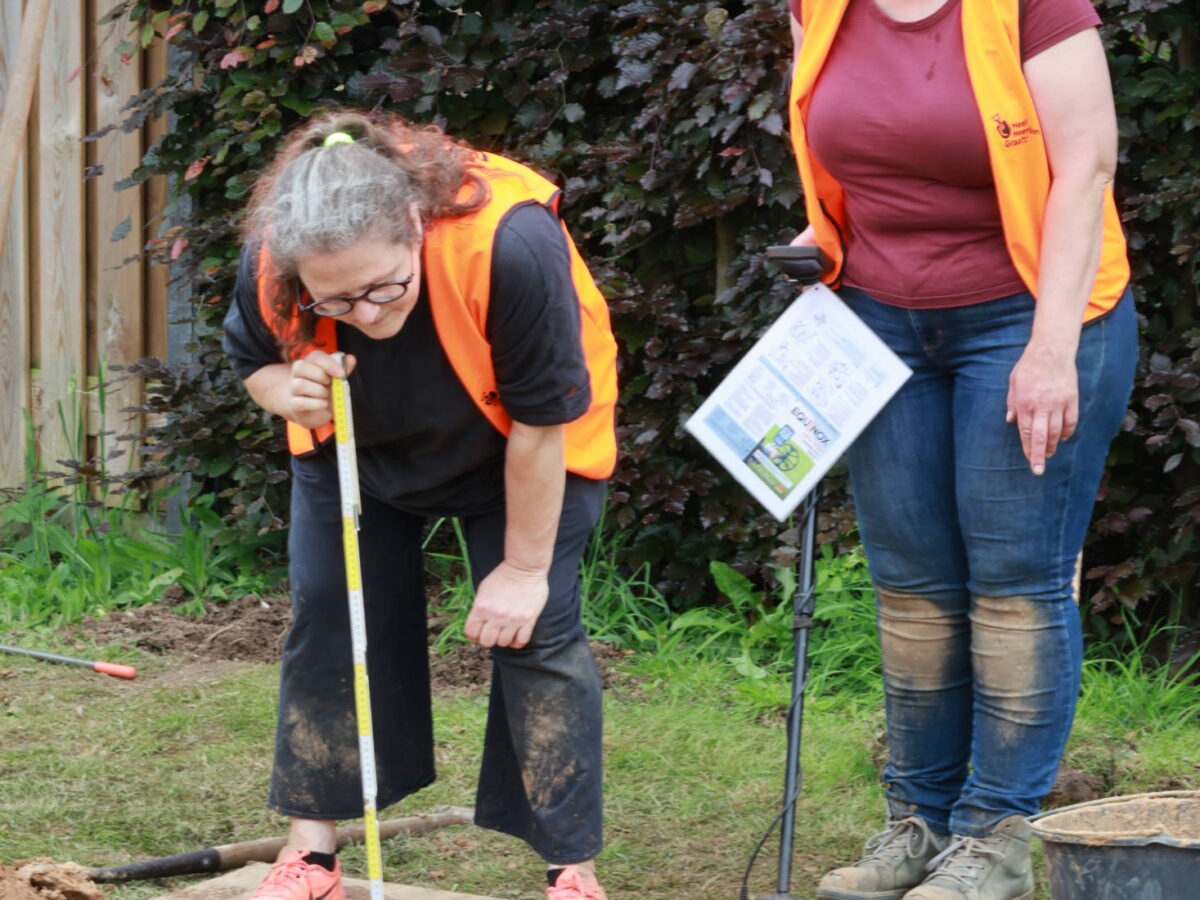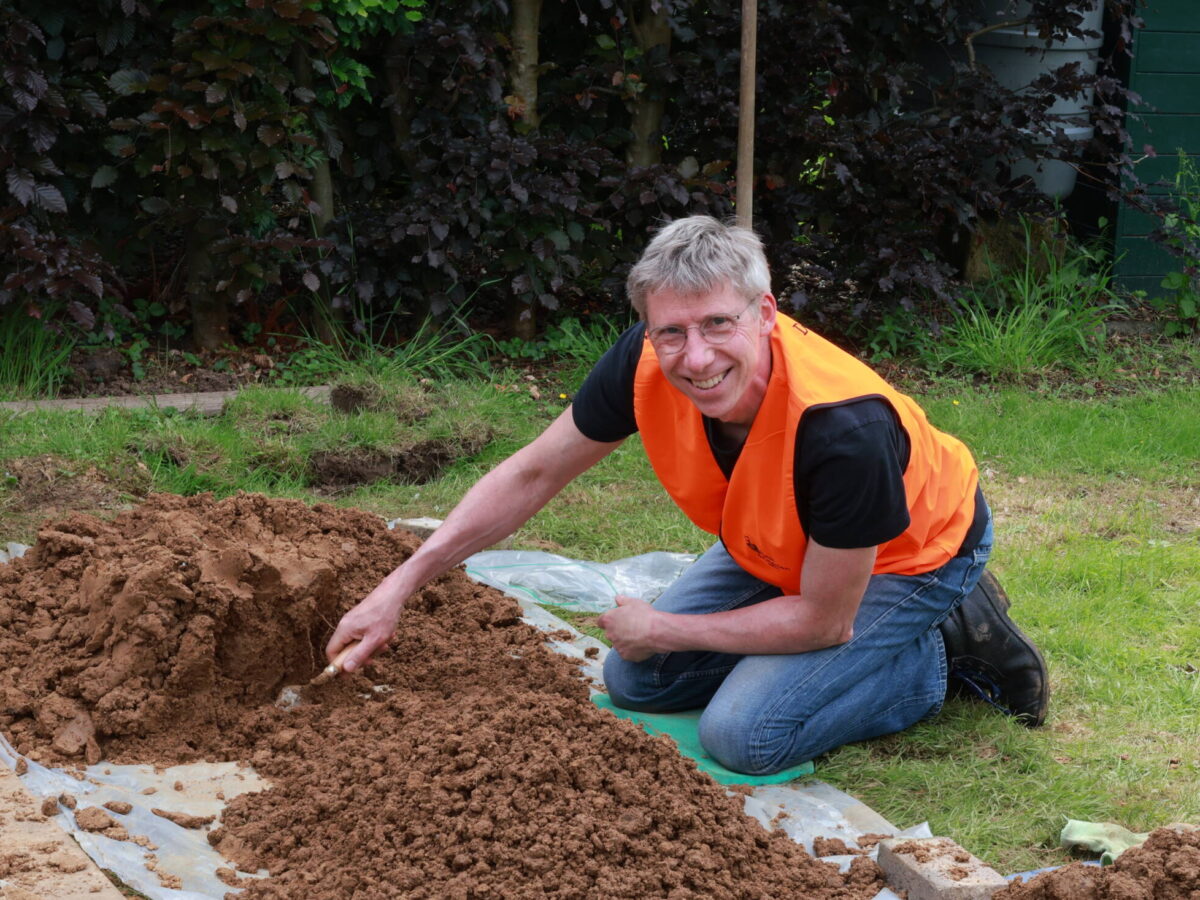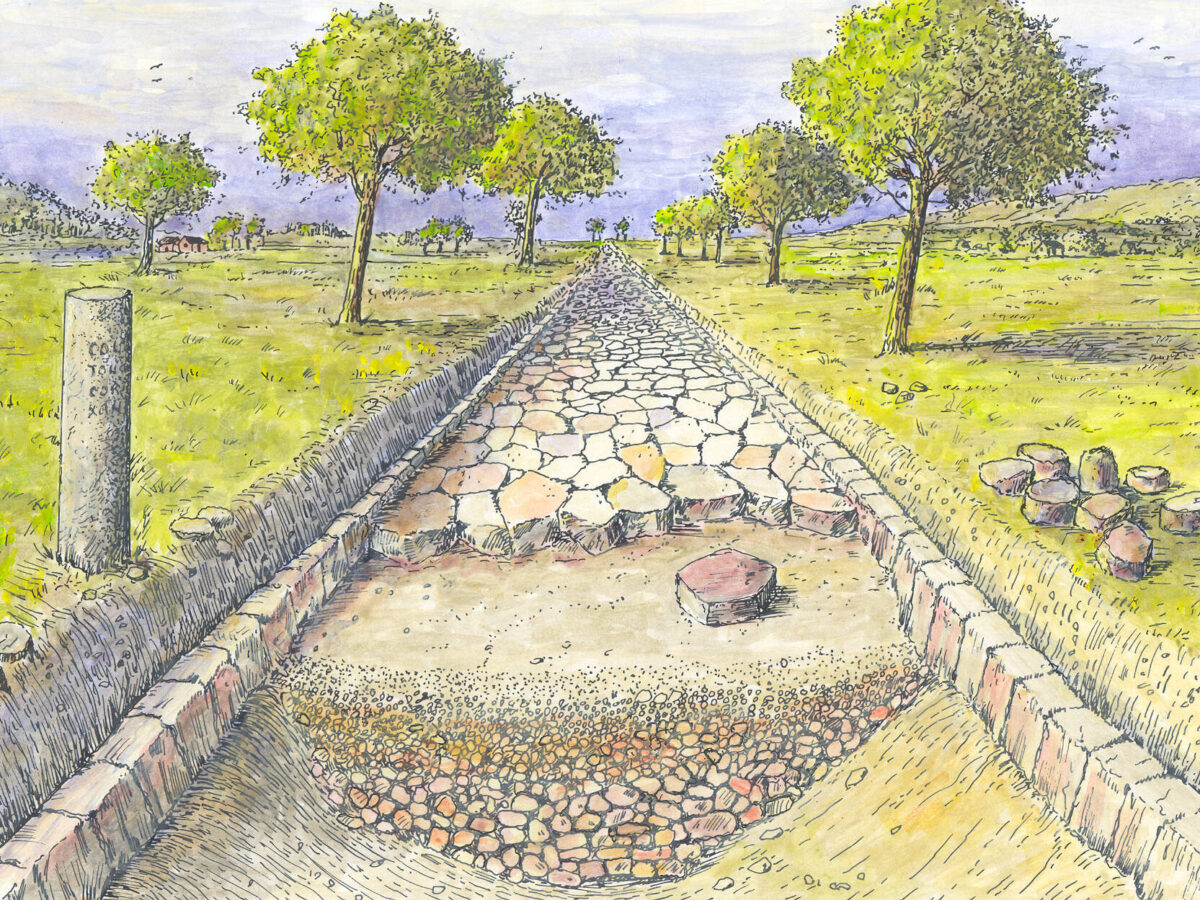The Romans were not the first in Rimburg
Author: Harry Lindelauf
Photography: Anja Neskens
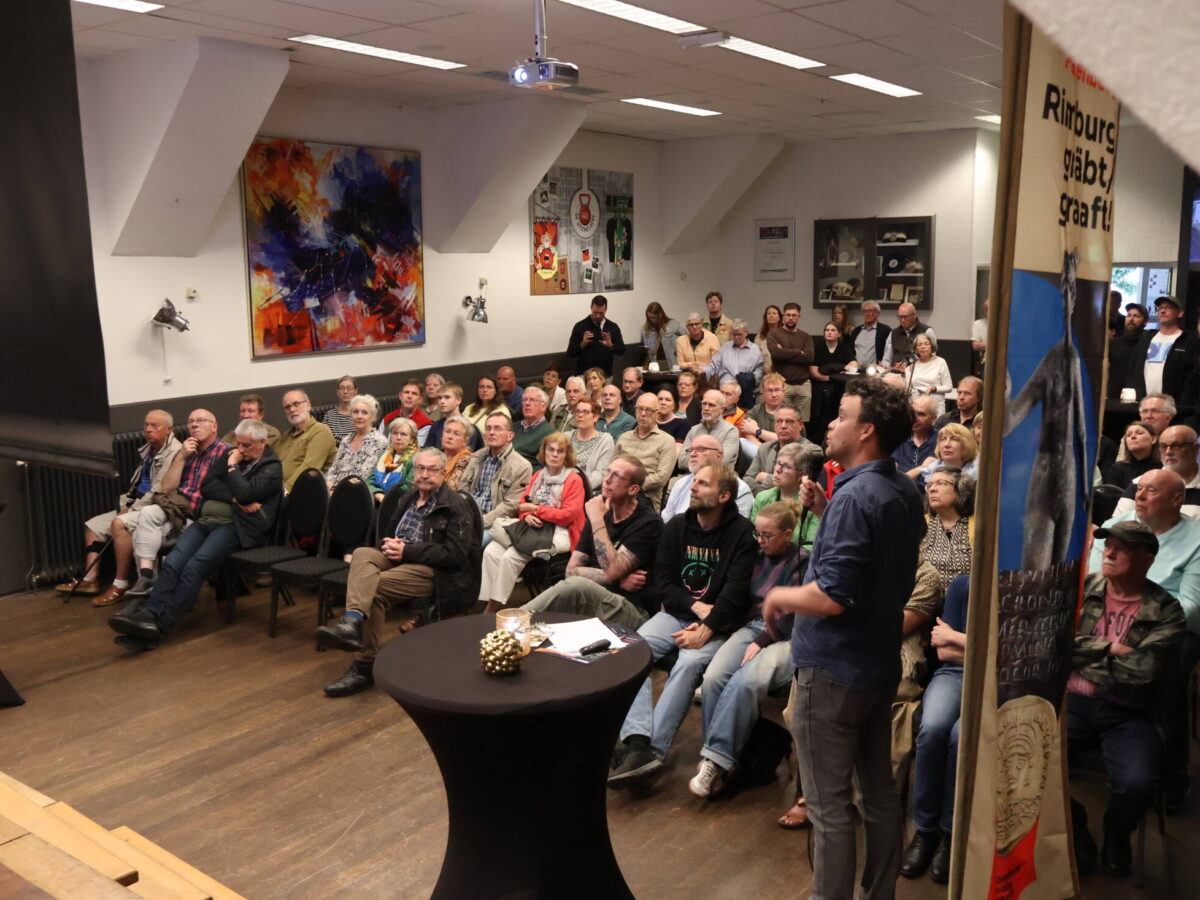
The Romans who, around the year 50, founded a roadside settlement by the bridge over the Worm, were not the first inhabitants of the Worm Valley. They had been preceded in the Neolithic period (5000–2000 BC) by farmers in two settlements on the edge of the Worm Valley near Rimburg.
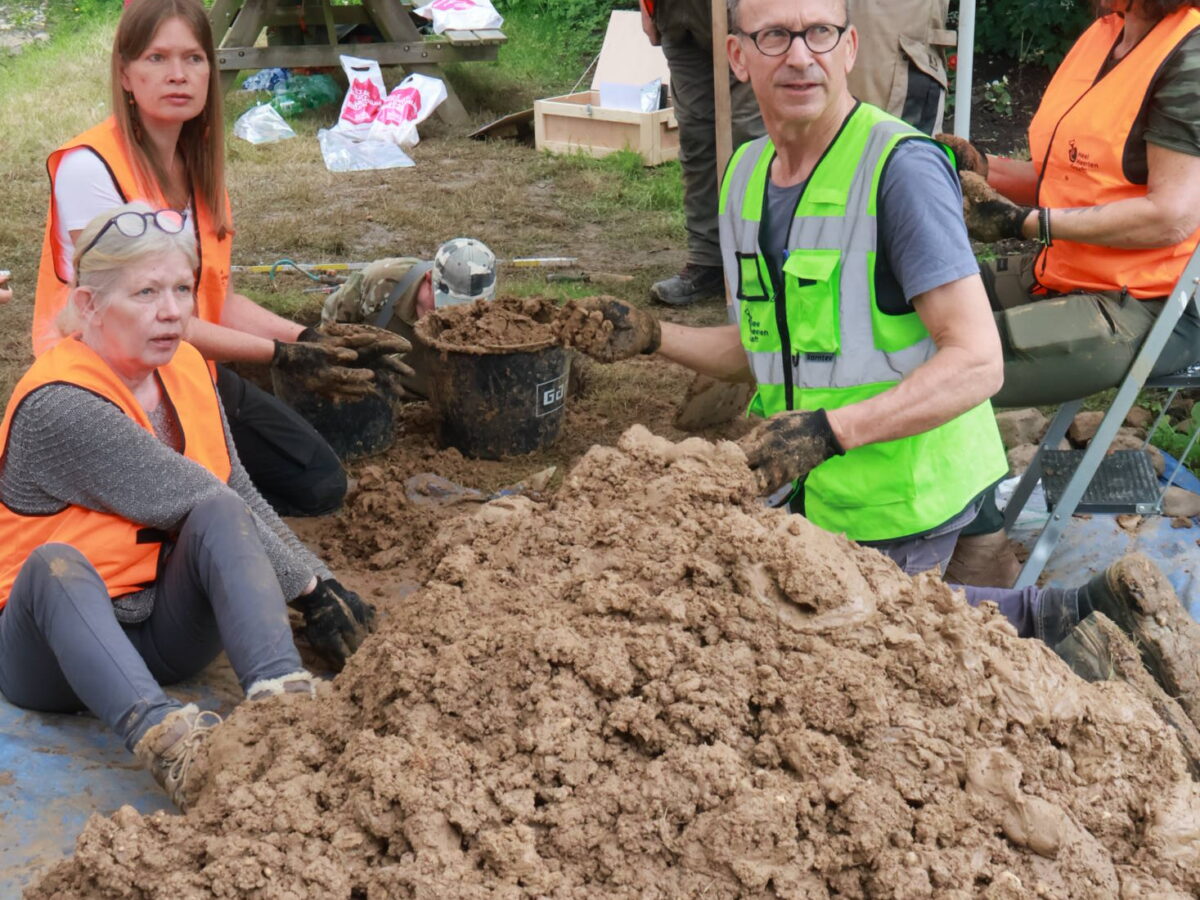
This is one of the insights that the unique German-Dutch cooperation between authorities, organizations and 120 volunteers in Rimburg gräbt/graaft has yielded. On Wednesday, May 21, 2025, archaeologists returned to Rimburg to present the results. Almost a year earlier, on May 25 and 26, 2024, those same archaeologists and volunteers, in soaking wet conditions, had joined forces to search for Rimburg’s past. This took place on both sides of the border, but outside the officially protected monument zones where Roman remains are known to exist: the foundations of the buildings of the village that emerged around the year 50 next to the Via Belgica bridge across the Worm.
Cart tracks
The excavations in 2024 took place in gardens, lawns, and public land. Eleven one-square-metre pits were dug, sometimes down to 1.85 metres, sometimes much less. In several cases, the high groundwater level was a major obstacle.
All the pits turned out to be filled with loess, a very fine silt that had gradually washed down from the plateau into the Worm Valley through rain and melting snow. This loess layer lies on top of the original Roman layer, effectively protecting it. In one pit, cart tracks from the late Middle Ages were discovered, but the loess layer itself yielded no spectacular finds.
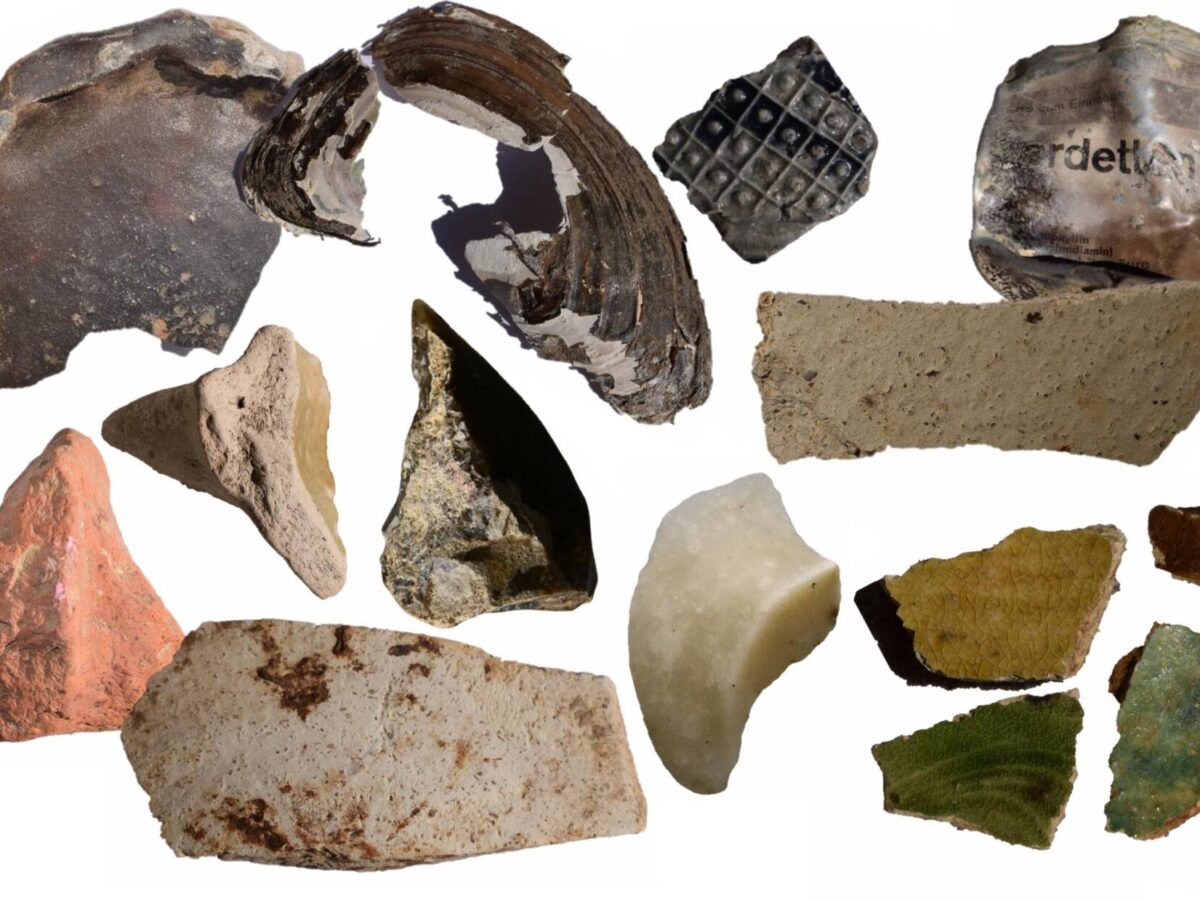
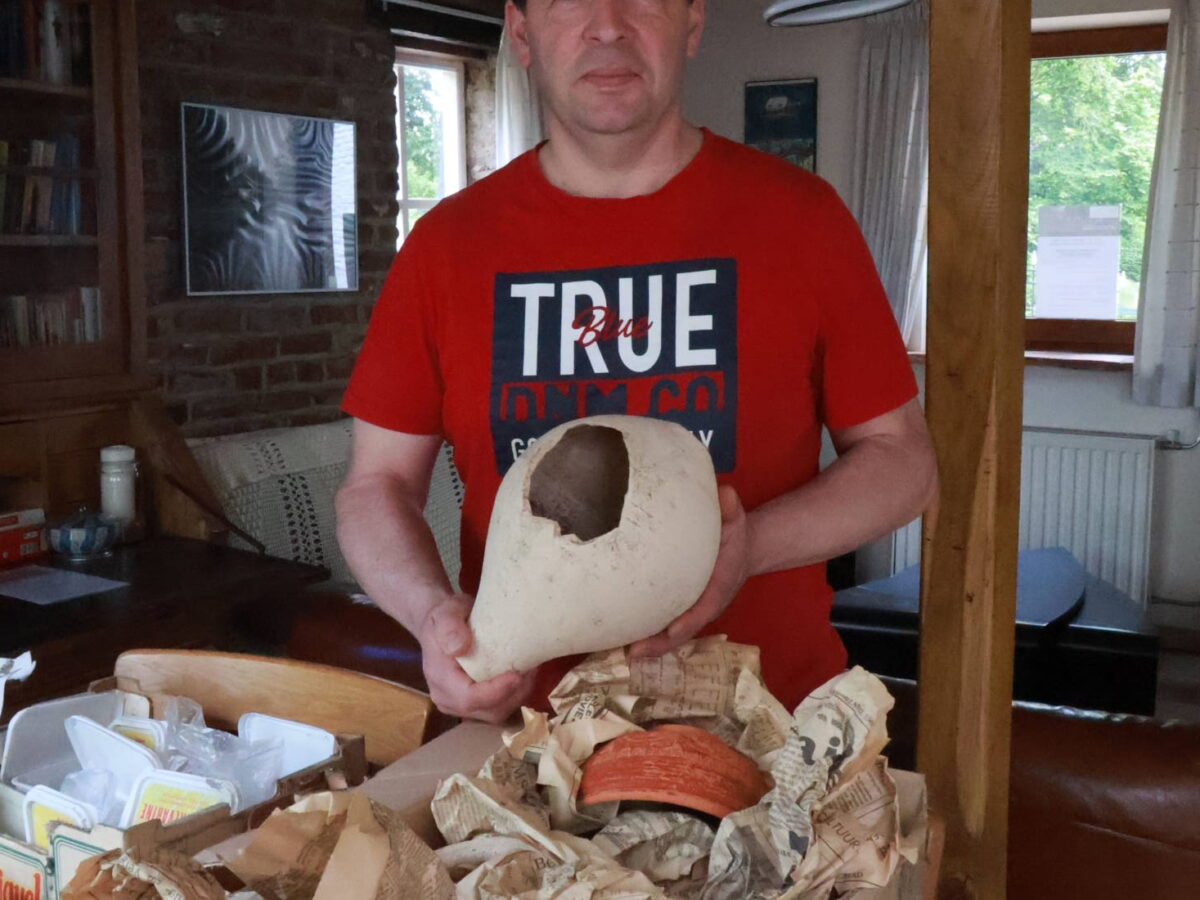
A box from the attic
One special surprise came when, thanks to the Rimburg digs enthusiasm, a resident handed over a box full of grave goods. The box had been stored in an attic since an excavation in 1970 and contained, among other things, a bronze spoon and an earthenware bowl from the period between AD 150 and 350. The finds originated from two graves of a Roman burial ground, discovered in 1970 during sewer construction works.
Well-chosen boundaries
The archaeologists were also satisfied for another reason that no major Roman finds turned up: “The excavations in the pits confirm that the boundaries of the protected monument area were well chosen,” says German archaeologist Petra Tutlies. Gaining insight into the soil layers is another valuable result, adds Hilde Vanneste, regional archaeologist of Parkstad: “That knowledge will be useful in case of future excavations.”
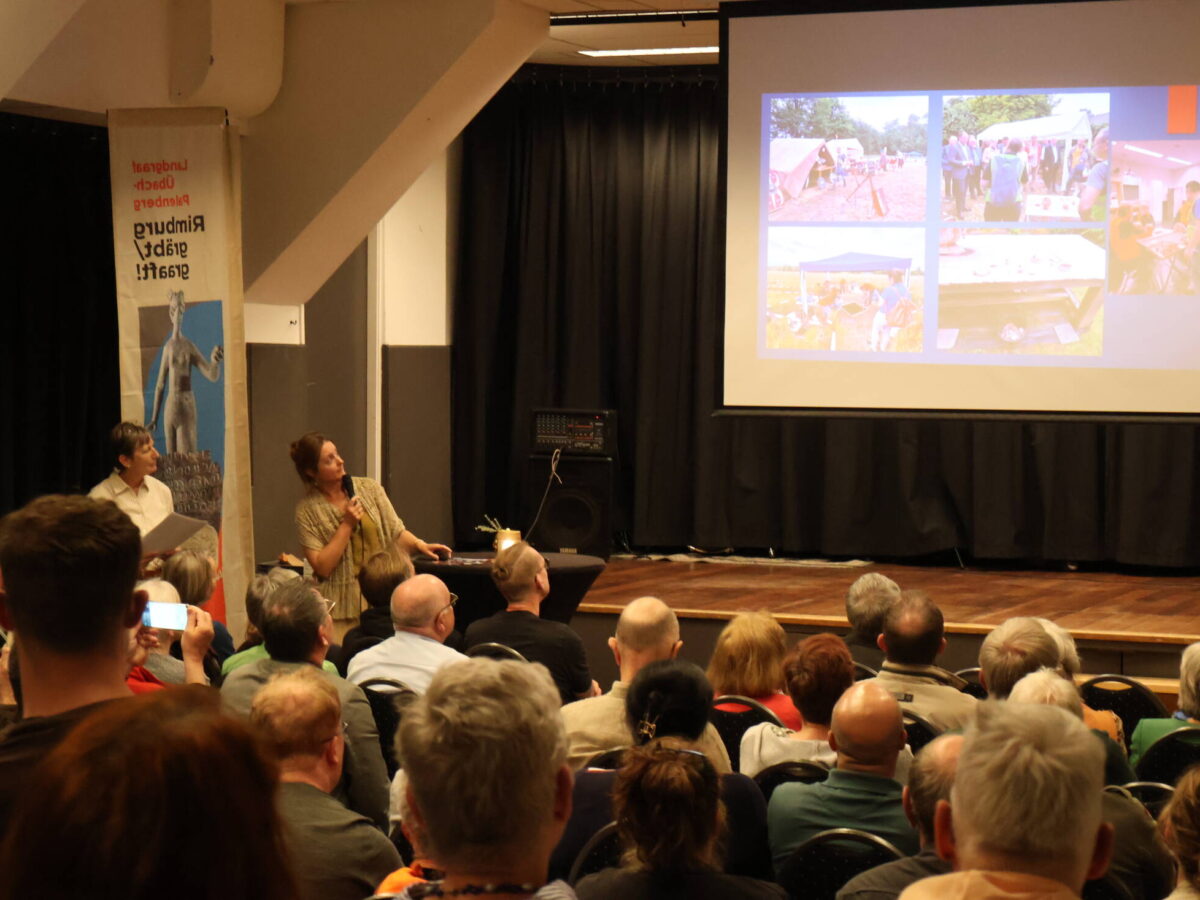
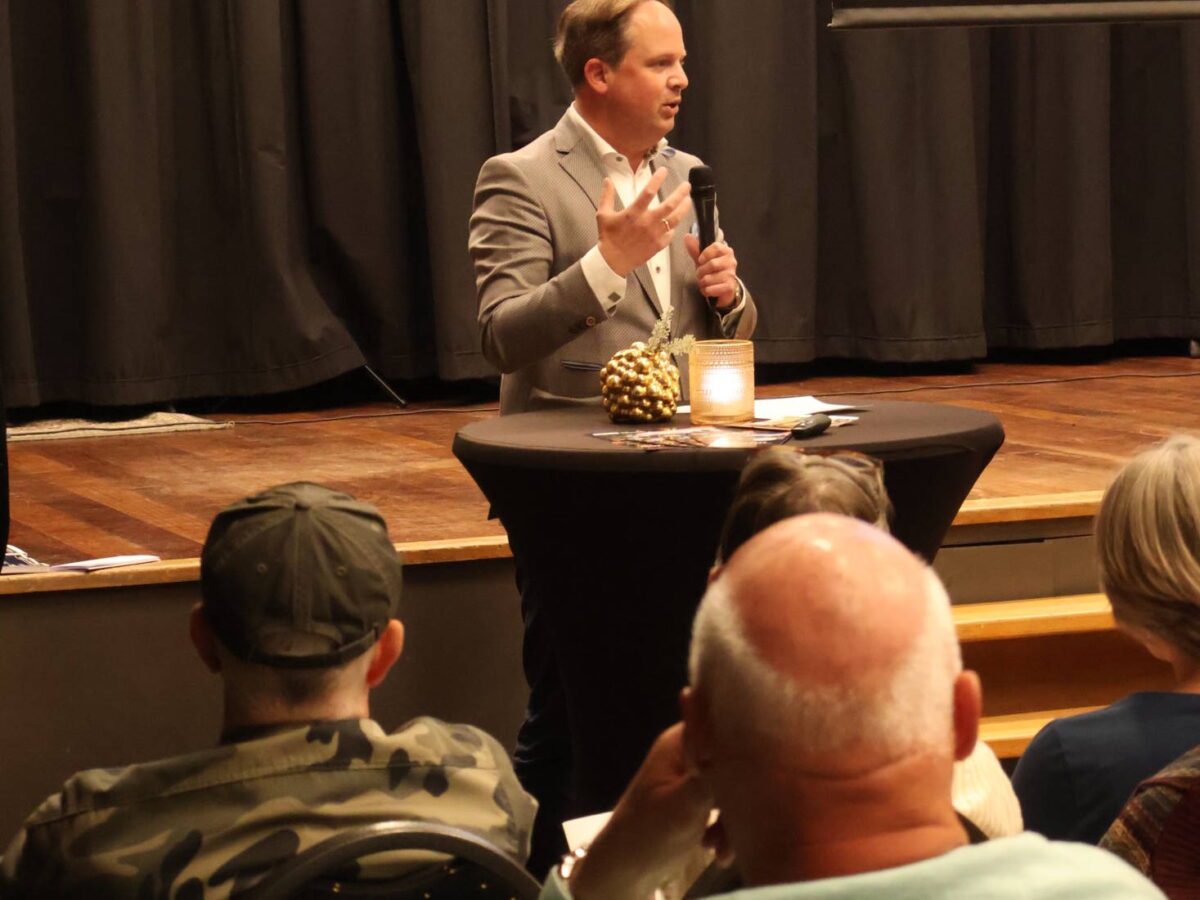
How history connects
Rimburg gräbt/graaft also achieved another intended result: Landgraaf/Rimburg and Übach-Palenberg have grown closer together. Richard de Boer, mayor of Landgraaf: “It is remarkable to see how history connects people. The fact that residents from the Netherlands and Germany dig together for their shared past makes me proud. This project shows how valuable cross-border cooperation is—not only for science, but also for the community.”
A fine example
Übach-Palenberg’s mayor Oliver Walther fully agreed: “Rimburg gräbt/graaft! is a fine example of how cooperation transcends borders. Thanks to the enthusiasm of so many volunteers, we are not only bringing our Roman history to life, but also strengthening the ties between our neighboring municipalities.”
The applause from the authorities was echoed by the residents. As in Heel Heerlen graaft, “one-square-metre friendships” grew among the volunteers, and during the follow-up evening on May 21, 2025, the question was already asked aloud: “What’s next?”
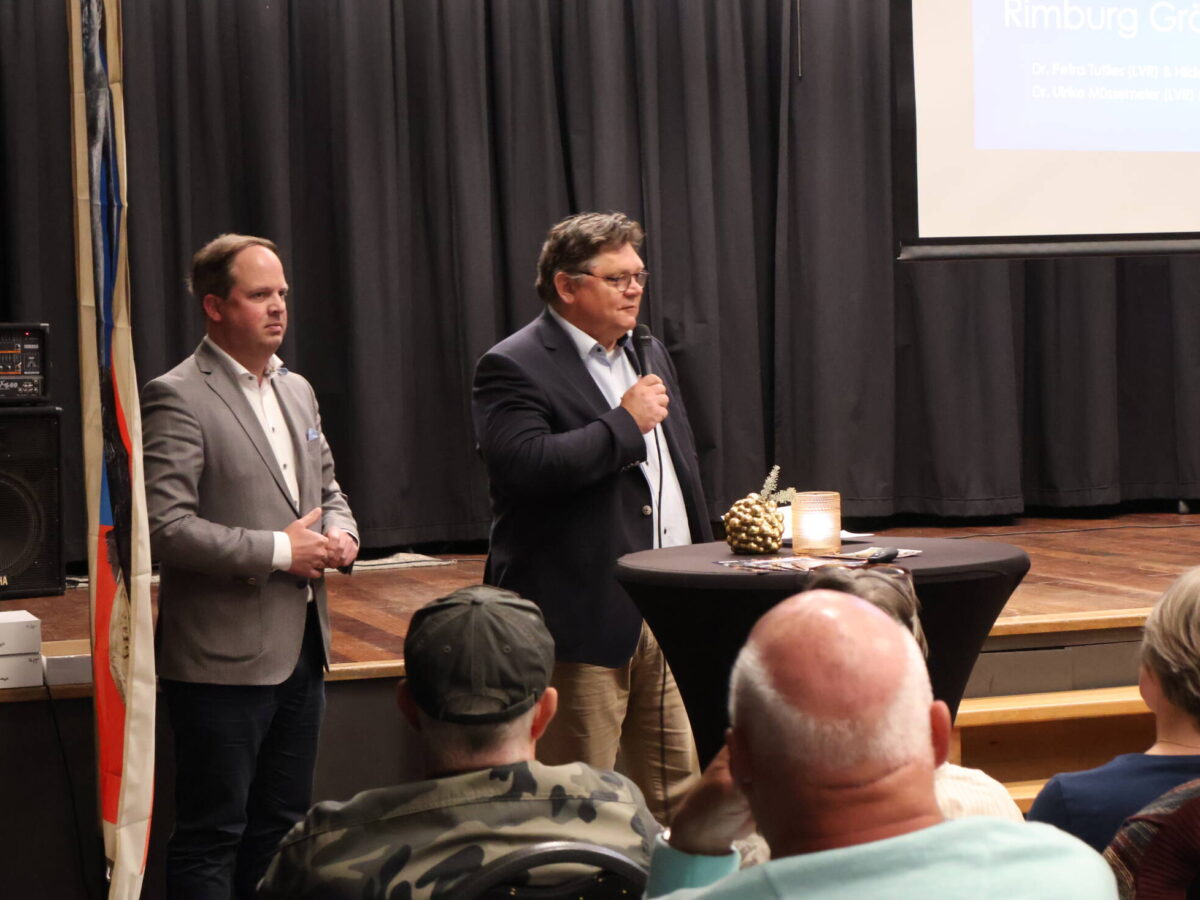
Rimburg gräbt/graaft is the first international archaeological citizen science project of its kind in both Germany and the Netherlands. Participants included: Landgraaf, Übach-Palenberg, Regio Deal Parkstad Limburg, Via Belgica, LVR (Landschaftsverband Rheinland), Erlebnisraum Römerstraße, and Constructing The Limes..
